List of minor universes: Difference between revisions
(Undid edit by Capstalker: It's been confirmed multiple times that the Atlus game in question is indeed Shin Megami Tensei. (Hell, the initials for Tokyo Mirage Sessions is backwards for the one for Shin Megami Tensei)) Tag: Undo |
Tag: Mobile edit |
||
| Line 2,064: | Line 2,064: | ||
*'''''Meteos''''' is a series of puzzle games originally released for the Nintendo DS. The [[X Bomb]]'s behavior in the ''Super Smash Bros.'' series is similar to that of the item of the same name in ''Meteos'', in which it explodes in a cross shape rather than exhibit its behavior from ''Kid Icarus: Uprising''. | *'''''Meteos''''' is a series of puzzle games originally released for the Nintendo DS. The [[X Bomb]]'s behavior in the ''Super Smash Bros.'' series is similar to that of the item of the same name in ''Meteos'', in which it explodes in a cross shape rather than exhibit its behavior from ''Kid Icarus: Uprising''. | ||
*'''''Policenauts''''' is a sci-fi adventure game made by Hideo Kojima for Konami. One character, Meryl Silverburgh, would serve as the basis of a character by the same name in the ''Metal Gear'' series, who appears as a sticker in ''Brawl'' and a Spirit in ''Ultimate''. | *'''''Policenauts''''' is a sci-fi adventure game made by Hideo Kojima for Konami. One character, Meryl Silverburgh, would serve as the basis of a character by the same name in the ''Metal Gear'' series, who appears as a sticker in ''Brawl'' and a Spirit in ''Ultimate''. | ||
*'''''Pro Yakyuu: Family Stadium''''' (or '''''Famista''''' for short) is a series of baseball games made by Namco. Two spin-offs of the franchise, ''Mario Superstar Baseball'' and ''Mario Super Sluggers'', are represented in ''Mario'' series. Content from these two games was been featured as ''Stickers'' in ''Brawl'' and as ''Spirits'' in ''Ultimate''. | |||
*'''''Pulseman''''' is a platformer game made by Game Freak for Sega. [[Pikachu]]'s [[Volt Tackle]] is inspired by the Volteccer, Pulseman's signature attack, and even has the same name in Japanese.<ref>https://bulbapedia.bulbagarden.net/wiki/List_of_references_to_Pulseman</ref> | *'''''Pulseman''''' is a platformer game made by Game Freak for Sega. [[Pikachu]]'s [[Volt Tackle]] is inspired by the Volteccer, Pulseman's signature attack, and even has the same name in Japanese.<ref>https://bulbapedia.bulbagarden.net/wiki/List_of_references_to_Pulseman</ref> | ||
*'''''Shin Megami Tensei''''' is a post-apocalyptic RPG made by Atlus. ''Persona'' is a sub-series of ''Shin Megami Tensei''. The Tsubasa Oribe and Tsubasa Oribe (Carnage Form) Spirits in ''Ultimate'' originate from ''Tokyo Mirage Sessions ♯FE'', a pop idol-themed crossover between ''Shin Megami Tensei'' and ''Fire Emblem''. | *'''''Shin Megami Tensei''''' is a post-apocalyptic RPG made by Atlus. ''Persona'' is a sub-series of ''Shin Megami Tensei''. The Tsubasa Oribe and Tsubasa Oribe (Carnage Form) Spirits in ''Ultimate'' originate from ''Tokyo Mirage Sessions ♯FE'', a pop idol-themed crossover between ''Shin Megami Tensei'' and ''Fire Emblem''. | ||
Revision as of 02:33, April 22, 2020
This is a list of minor universes with smaller forms of representation in the Super Smash Bros. series, such as background characters, trophies, stickers, spirits, music, or Mii Fighter costumes. For universes which are represented by Fighters, stages, Assist Trophies, items, or enemies, see here. For Namco minor universes, see here. For minor universes under the Mii banner, see here.
Nintendo Series
1080°
| 1080° (universe) | |
|---|---|
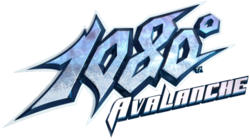
| |
| Developer(s) | Nintendo |
| Publisher(s) | Nintendo |
| Genre(s) | Sports |
| Console/platform of origin | Nintendo 64 |
| First installment | 1080° Snowboarding (1998) |
| Latest installment | 1080° Avalanche (2003) |
1080° (テン・エイティ, 1080°) is a series of snowboarding games released for the Nintendo 64 and GameCube.
A character from the first game (but not the second), Kensuke Kimachi, appears as a trophy in Super Smash Bros. Melee.
Akari Hayami, Ricky Winterborn and his Snowman costume appear as stickers in Super Smash Bros. Brawl, with all of their artwork being taken from 1080° Avalanche. The music track Golden Forest (1080° Snowboarding) appears in Super Smash Bros. Brawl in the My Music for Port Town Aero Dive.
Golden Forest (1080° Snowboarding) returns under the title Golden Forest in Super Smash Bros. for Wii U on the same stage.
Akari Hayami as she appears in 1080° Avalanche returns as a spirit in Super Smash Bros. Ultimate. Golden Forest once again returns, now only playing on Summit, Duck Hunt, and stages from non-playable universes.
And-Kensaku
| And-Kensaku (universe) | |
|---|---|

| |
| Developer(s) | Shift |
| Publisher(s) | Nintendo |
| Genre(s) | Party |
| Console/platform of origin | Wii |
| First installment | And-Kensaku (2010) |
| Latest installment | And-Kensaku (2010) |
And-Kensaku (安藤ケンサク, And-Kensaku) is a party game for the Wii in which players try to predict how many times a certain term has been searched on Google.
The game's host, Ando Kensaku, appears as a spirit in Super Smash Bros. Ultimate.
AR Games
| AR Games (universe) | |
|---|---|

| |
| Developer(s) | Arika |
| Publisher(s) | Nintendo |
| Genre(s) | Augmented reality |
| Console/platform of origin | 3DS (Pre-loaded app) |
| First installment | AR Games (2011) |
| Latest installment | AR Games (2011) |
AR Games (ARゲームズ, AR Games) is a built-in application in the Nintendo 3DS, showcasing the Augmented Reality capabilities of the system.
The Dragon Battle music appears in the Gamer stage in Super Smash Bros. for Wii U.
Dragon Battle returns in Super Smash Bros. Ultimate, now only playing on Summit, Duck Hunt, and stages from non-playable universes.
ASH: Archaic Sealed Heat
| Archaic Sealed Heat (universe) | |
|---|---|

| |
| Developer(s) | Mistwalker Racjin |
| Publisher(s) | Nintendo |
| Genre(s) | Tactical role-playing |
| Console/platform of origin | DS |
| First installment | ASH: Archaic Sealed Heat (2007) |
| Latest installment | ASH: Archaic Sealed Heat (2007) |
ASH: Archaic Sealed Heat (アルカイック シールド ヒート Archaic Sealed Heat) is a tactical role-playing game developed by Mistwalker and Racjin and published by Nintendo for the Nintendo DS in Japan in 2007. It features gameplay similar to the Fire Emblem series.
The protagonist of the game, Princess Aisya, appears as a spirit in Super Smash Bros. Ultimate.
Astral Chain
| Astral Chain (universe) | |
|---|---|
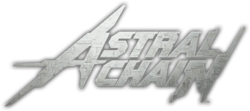
| |
| Developer(s) | PlatinumGames |
| Publisher(s) | Nintendo |
| Genre(s) | Action-adventure Hack and slash |
| Console/platform of origin | Switch |
| First installment | Astral Chain (2019) |
| Latest installment | Astral Chain (2019) |
Astral Chain (アストラルチェイン, Astral Chain), also stylized as ASTRAL CHAIN, is an action-adventure hack and slash developed by PlatinumGames and published by Nintendo for the Nintendo Switch in 2019. Set in 2078, it follows the Howard Twins, new recruits for the Neuron Police Task Force. Using Legions, tamed versions of the otherwordly and usually deadly Chimeras, they fight against the hoard of strange beings to help defend The Ark, the city containing the last remnants of humanity.
On January 13th, 2020, it was announced that for five days starting from January 17th, spirits for the main protagonists, Lappy, and Kyle would be introduced in the spirit event Chain the Future to Spirits!.
Baseball
| Baseball (universe) | |
|---|---|

| |
| Developer(s) | Nintendo |
| Publisher(s) | Nintendo |
| Genre(s) | Sports |
| Console/platform of origin | NES |
| First installment | Baseball (1983) |
| Latest installment | Baseball (Game Boy) (1989) |
Baseball (ベースボール, Baseball) is a baseball video game developed and published by Nintendo for the NES and Game Boy. It is the first ever sports game released by Nintendo on the Famicom/NES.
A Pitcher and a Batter from the game appear as a shared spirit in Super Smash Bros. Ultimate.
Battle Clash
| Battle Clash (universe) | |
|---|---|
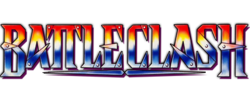
| |
| Developer(s) | Nintendo Intelligent Systems |
| Publisher(s) | Nintendo |
| Genre(s) | Light gun shooter |
| Console/platform of origin | SNES |
| First installment | Battle Clash (1992) |
| Latest installment | Metal Combat: Falcon's Revenge (1993) |
Battle Clash (スペースバズーカ, Space Bazooka) is a series of light gun shooters released for the Super NES that was compatible with the Super Scope. The series follows Mike Anderson, who has several battles with various opponents in giant mechs (which are called "Standing Tanks", or "ST" for short). The game's sequel, Metal Combat: Falcon's Revenge, was not released in Japan.
The ST Falcon, Mike's ST, appears as a spirit in Super Smash Bros. Ultimate.
Big Brain Academy
| Big Brain Academy (universe) | |
|---|---|
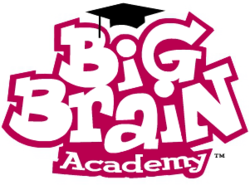
| |
| Developer(s) | Nintendo |
| Publisher(s) | Nintendo |
| Genre(s) | Puzzle |
| Console/platform of origin | DS |
| First installment | Big Brain Academy (2005) |
| Latest installment | Big Brain Academy: Wii Degree (2007) |
Big Brain Academy (やわらかあたま塾, Big Brain Academy) is a series of puzzle educational games for the Nintendo DS and Wii where the player does a series of tests to measure their brain's mass, where the heavier the brain is, the smarter it is or the better its reaction time.
Two pieces of artwork of Dr. Lobe from both of the Big Brain Academy games appear as two stickers in Super Smash Bros. Brawl. A music track titled Title (Big Brain Academy) plays on the Distant Planet stage.
The Title (Big Brain Academy) track returns in Super Smash Bros. for Wii U, but now plays on the Miiverse stage.
Dr. Lobe returns as a spirit in Super Smash Bros. Ultimate. Title (Big Brain Academy) once again returns, now under the title Title Theme - Big Brain Academy and only playing on Summit, Duck Hunt, and stages from non-playable universes.
bit Generations
| bit Generations (universe) Art Style (universe) Digiluxe (universe) | |
|---|---|
| Developer(s) | Skip Ltd. Q-Games |
| Publisher(s) | Nintendo |
| Genre(s) | Puzzle |
| Console/platform of origin | Game Boy Advance |
| First installment | bit Generations Series One (2006) |
| Latest installment | Rotozoa (2010) |
bit Generations, known as Digiluxe in Brawl, is a series of 7 simple games released exclusively in Japan in 2006 for the Game Boy Advance. 4 of the games were later rereleased for the Nintendo DSiWare and WiiWare along with some brand new games under the name Art Style and were released outside of Japan in North America and PAL regions.
The logos for 5 out of the 7 games appear in Super Smash Bros. Brawl as stickers. The games include Orbiter, Chromatron, Boundish, Digidrive, and Rotohex.
BoxBoy!
| BoxBoy! (universe) | |
|---|---|
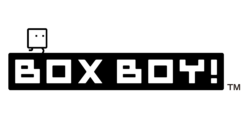
| |
| Developer(s) | HAL Laboratory |
| Publisher(s) | Nintendo |
| Genre(s) | Puzzle Platformer |
| Console/platform of origin | 3DS (eShop) |
| First installment | BoxBoy! (2015) |
| Latest installment | BoxBoy! + BoxGirl! (2019) |
BoxBoy! (ハコボーイ!, Box Boy!) is a series of puzzle-platformer games developed by HAL Laboratory. The games involve solving various puzzles by generating boxes from the protagonist's body.
The game's protagonist, Qbby, appears as a spirit in Super Smash Bros. Ultimate. The spirit can also be unlocked by scanning the Qbby amiibo, which works with all versions of the game despite only releasing in Japan.
Calciobit
| Calciobit (universe) Nintendo Pocket Football Club (universe) | |
|---|---|

| |
| Developer(s) | Paritybit |
| Publisher(s) | Nintendo Game Addict |
| Genre(s) | Sports |
| Console/platform of origin | Game Boy Advance |
| First installment | Calciobit (2006) |
| Latest installment | Calciobit A (2017) |
Calciobit (カルチョビット, Calciobit) is a soccer management simulation game released exclusively in Japan for the Game Boy Advance in 2006. The game then received a sequel in 2012 for the 3DS called Pocket Soccer League Calciobit that later got released in Europe exclusively for the Nintendo 3DS eShop in 2014 as Nintendo Pocket Football Club. An installment for mobile phones, Calciobit A, was released for mobile devices in 2017, this time published by Game Addict.
A trophy depicting 2 Blue Team soccer players, 3 Red Team soccer players, and a referee appears in Super Smash Bros. for Nintendo 3DS, under the name "Athletes" in North America and "Football Players" in PAL regions.
A single soccer player (Under the name "Pocket Football Player") appears as a spirit in Super Smash Bros. Ultimate.
Captain Rainbow
| Captain Rainbow (universe) | |
|---|---|
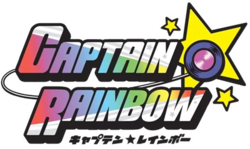
| |
| Developer(s) | Skip Ltd. |
| Publisher(s) | Nintendo |
| Genre(s) | Action-adventure |
| Console/platform of origin | Wii |
| First installment | Captain Rainbow (2008) |
| Latest installment | Captain Rainbow (2008) |
Captain Rainbow (キャプテン レインボー, Captain Rainbow) is an action-adventure game featuring lesser known Nintendo characters trying to find their wish in life with the help of the title hero.
The titular character and the obese version of Little Mac appear as trophies. A music track called Tomorrow's Passion appears in Super Smash Bros. for Wii U as a track for the Boxing Ring stage.
The titular character returns as a spirit in Super Smash Bros. Ultimate, as well as his real identity, Nick. Tomorrow's Passion returns, now only playing on Summit, Duck Hunt, and stages from non-playable universes.
Card Hero
| Card Hero (universe) | |
|---|---|

| |
| Developer(s) | Nintendo Intelligent Systems |
| Publisher(s) | Nintendo |
| Genre(s) | Role-playing |
| Console/platform of origin | Game Boy Color |
| First installment | Trade & Battle: Card Hero (2000) |
| Latest installment | Card Hero: Speed Battle (2009) |
Card Hero (カードヒーロー, Card Hero) is a series that began with a Japan-only card battle RPG released for the Game Boy Color that popularized a relatively obscure trading card game in Japan. Trading cards came packaged with the original game. A sequel was released for the Nintendo DS in 2007 titled Kousoku Card Battle: Card Hero. A DSiWare title known as Card Hero: Speed Battle was later released in 2009, but it only allowed the ability to battle and build decks. None of the games were released outside of Japan.
The shop manager of the series' card shop, Maruo Maruhige, appears as a trophy in Super Smash Bros. Melee.
Hiroshi, the main character of Trade & Battle: Card Hero, as well as Tameo and a Master card, appear as stickers in Super Smash Bros. Brawl.
Maruo Maruhige returns as a spirit in Super Smash Bros. Ultimate (this time under the name "Maruhige Shop Owner"), along with Satoru, the main protagonist of Kousoku Card Battle: Card Hero.
Chalien
| Chalien (universe) | |
|---|---|
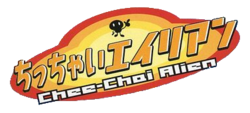
| |
| Developer(s) | Creatures, Inc. Zener Works |
| Publisher(s) | Creatures, Inc. Nintendo |
| Genre(s) | Puzzle Minigame |
| Console/platform of origin | Game Boy Color |
| First installment | Chee-Chai Alien (2001) |
| Latest installment | Spin Six (2009) |
Chalien (ちゃいリアン, Chalien), short for Chee-Chai Alien (ちっちゃいエイリアン, Tiny Alien), is a series of minigame puzzle games released for the Game Boy Color and Game Boy Advance by Creatures, Inc. featuring various alien-like creatures called "Chaliens". One of the games in the sequel would later release as a standalone DSiWare title called Spin Six, developed by Zener Works.
Li'l Blue, the mascot of the series, appears as a spirit in Super Smash Bros. Ultimate.
Chibi-Robo!
| Chibi-Robo! (universe) | |
|---|---|
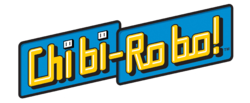
| |
| Developer(s) | Skip Ltd. Nintendo |
| Publisher(s) | Nintendo |
| Genre(s) | Various |
| Console/platform of origin | GameCube |
| First installment | Chibi-Robo! (2005) |
| Latest installment | Chibi-Robo! Zip Lash (2015) |
Chibi-Robo! (ちびロボ!, Chibi-Robo!) is a series of various types of games involving a titular toy robot who is tasked with various missions, from keeping a family happy to saving a park from danger to saving the world from an alien threat.
The titular character (along with his motivator, Telly) appears as a trophy in Super Smash Bros. Brawl. Stickers in Super Smash Bros. Brawl include Chibi-Robo, Chibi-Robo Running, Mr. Sanderson (referred to as "Papa"), and Telly with their artwork from the original Chibi-Robo! and Chibi-Robo and Free Ranger with their artwork from Chibi-Robo!: Park Patrol.
Chibi-Robo returns as a shared trophy with Chibi-Tot from Chibi-Robo: Photo Finder in Super Smash Bros. for Nintendo 3DS.
Chibi-Robo, his Super Chibi-Robo form, Telly (as he appears in Zip Lash), Drake Redcrest (also as he appears in Zip Lash), and a Chibi-Tot all appear as spirits in Super Smash Bros. Ultimate. Chibi-Robo also appears as a Mii Fighter costume for Mii Gunners.
Chōsōjū Mecha MG
| Chōsōjū Mecha MG (universe) | |
|---|---|
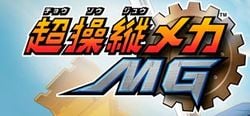
| |
| Developer(s) | Sandlot |
| Publisher(s) | Nintendo |
| Genre(s) | Action |
| Console/platform of origin | DS |
| First installment | Chōsōjū Mecha MG (2006) |
| Latest installment | Chōsōjū Mecha MG (2006) |
Chōsōjū Mecha MG (超操縦メカ MG, Super Maneuvering Mecha MG) is an action game featuring giant robots called Marionation Gears (MG for short) for the Nintendo DS released exclusively in Japan.
The Warrior Mech Gauss, HM Mech Rosa, and Musketeer Daltania appear as trophies in Super Smash Bros. Brawl. All 3 of the MGs along with the Ningyou Kouchuu Viigaru also appear as stickers. Additionally, a remix of Marionation Gear plays on Norfair.
The remix of Marionation Gear returns in Super Smash Bros. for Wii U on the same stage.
Warrior Mech Gauss returns as a spirit in Super Smash Bros. Ultimate. Marionation Gear once again returns, now only playing on Summit, Duck Hunt, and stages from non-playable universes.
Code Name: S.T.E.A.M.
| Code Name: S.T.E.A.M. (universe) | |
|---|---|
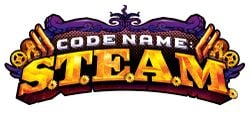
| |
| Developer(s) | Intelligent Systems |
| Publisher(s) | Nintendo |
| Genre(s) | Turn-based strategy |
| Console/platform of origin | 3DS |
| First installment | Code Name: S.T.E.A.M. (2015) |
| Latest installment | Code Name: S.T.E.A.M. (2015) |
Code Name: S.T.E.A.M. (Code Name: S.T.E.A.M. リンカーンVSエイリアン, Code Name: S.T.E.A.M. Lincoln VS Aliens) is a turn-based strategy game featuring classic American literature characters in a steampunk setting battling an alien threat. The player could also summon certain Fire Emblem characters by using their amiibo in the game.
The game's depiction of Henry Fleming from The Red Badge of Courage (who is also the main protagonist of the game) appears as a spirit in Super Smash Bros. Ultimate. A remix of Trouble Brewing II appears as a music track, playing only on Summit, Duck Hunt, and stages from non-playable universes. Additionally, the tracks Code Name: F.E., Lords-A Chance Encounter, and Lords-Showdown, remixes of Fire Emblem music, are listed as Fire Emblem music tracks in Ultimate, and thus they only play on the Fire Emblem stages.
Cubivore
| Cubivore (universe) | |
|---|---|

| |
| Developer(s) | Saru Brunei Intelligent Systems |
| Publisher(s) | Nintendo Atlus |
| Genre(s) | Action-adventure |
| Console/platform of origin | GameCube |
| First installment | Cubivore: Survival of the Fittest (2002) |
| Latest installment | Cubivore: Survival of the Fittest (2002) |
Cubivore: Survival of the Fittest (動物番長, Animal Leader) is a GameCube simulation video game where the player plays as a cube shaped animal, called a Cubivore, to eat other Cubivores to mutate and become stronger.
Super Smash Bros. Melee promoted Cubivore before its release with the inclusion of a trophy of a creature named Alpha, although said creature does not exist in the final game.
A pig, which is the first creature in the game the player starts with, appears as a spirit in Super Smash Bros. Ultimate.
Detective Club
| Detective Club (universe) | |
|---|---|
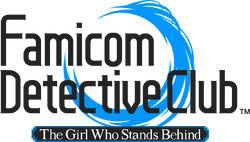
| |
| Developer(s) | Nintendo |
| Publisher(s) | Nintendo |
| Genre(s) | Adventure |
| Console/platform of origin | Famicom (Disk System) |
| First installment | Famicom Tantei Club: Kieta Kōkeisha (1988) |
| Latest installment | Famicom Tantei Club Part II: Ushiro ni Tatsu Shōjo (Super Famicom) (1998) |
Detective Club (探偵倶楽部, Detective Club) is a series of Japan-only detective games released for the Famicom Disk System, Super Famicom, Satellaview, and Nintendo Switch. The original Famicom versions of the first two installments also got re-released on the Game Boy Advance as a part of the Famicom/NES Classics series.
Ayumi Tachibana appears as a trophy in Super Smash Bros. Melee.
The beginning portion of the title screen music from Ushiro ni Tatsu Shōjo appears in the Famicom Medley theme in Super Smash Bros. Brawl.
Ayumi Tachibana returns as a spirit in Super Smash Bros. Ultimate
Ayumi Tachibana was considered as a fighter for Melee, but scrapped "due to a lack of familiarity abroad".[1]
Disaster: Day of Crisis
| Disaster: Day of Crisis (universe) | |
|---|---|

| |
| Developer(s) | Monolith Soft |
| Publisher(s) | Nintendo |
| Genre(s) | Action-adventure |
| Console/platform of origin | Wii |
| First installment | Disaster: Day of Crisis (2008) |
| Latest installment | Disaster: Day of Crisis (2008) |
Disaster: Day of Crisis (ディザスター デイ オブ クライシス, Disaster: Day of Crisis) is an action-adventure survival game in which the player must save several victims of various natural disasters, while also saving his late friend's sister from an organization called "SURGE".
Raymond Bryce, the main protagonist, appears as a spirit in Super Smash Bros. Ultimate.
Doshin the Giant
| Doshin the Giant (universe) | |
|---|---|
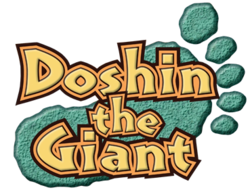
| |
| Developer(s) | Param Nintendo |
| Publisher(s) | Nintendo |
| Genre(s) | God game |
| Console/platform of origin | Nintendo 64 (64DD) |
| First installment | Doshin the Giant (64DD) (1999) |
| Latest installment | Doshin the Giant (GCN) (2002) |
Doshin the Giant (巨人のドシン, Doshin the Giant) is a god game for the 64DD (which later got an expansion, also for the 64DD, and a re-release for the GameCube in 2002 in both Japan and Europe) where the player controls a yellow giant named Doshin to help the inhabitants of Barudo, but he can also transform into his evil form, Jashin, to destroy everything in sight.
The two forms that the Giant can take, Love Giant (Doshin) and Hate Giant (Jashin) (with the former holding an islander in his hands), appear as trophies in Super Smash Bros. Melee.
English Training
| English Training (universe) | |
|---|---|

| |
| Developer(s) | Plato |
| Publisher(s) | Nintendo |
| Genre(s) | Education |
| Console/platform of origin | DS |
| First installment | English Training: Have Fun Improving Your Skills! (2006) |
| Latest installment | New English Training: Learn With Tempo – Advanced Edition (2009) |
English Training (トレーニング えいご, English Training) is a series of Nintendo DS educational games under the Touch! Generations brand released exclusively in Japan and non-English speaking countries in Europe which helps people comprehend English.
Dzuke-chan, the host of the Japanese versions, appears as a sticker in Super Smash Bros. Brawl.
Eternal Darkness
| Eternal Darkness (universe) | |
|---|---|
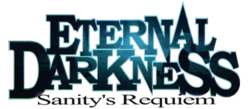
| |
| Developer(s) | Silicon Knights |
| Publisher(s) | Nintendo |
| Genre(s) | Action-adventure Psychological horror |
| Console/platform of origin | GameCube |
| First installment | Eternal Darkness: Sanity's Requiem (2002) |
| Latest installment | Eternal Darkness: Sanity's Requiem (2002) |
Eternal Darkness: Sanity's Requiem (エターナルダークネス 〜招かれた13人〜, Eternal Darkness: 13 Invited Guests) is a psychological horror game for the Nintendo GameCube where 12 characters from various different decades or centuries must stop the world from falling into darkness. The game is notable for introducing the concept of a Sanity Meter, which would decrease when spotted by enemies, allowing a number of frightening or disorienting effects to happen in-game. The game is also notable for being the first Nintendo-published game to receive an M (Mature) rating from the ESRB.
Alexandra Roivas, the main protagonist, appears as a spirit in Super Smash Bros. Ultimate.
Ever Oasis
| Ever Oasis (universe) | |
|---|---|

| |
| Developer(s) | Grezzo |
| Publisher(s) | Nintendo |
| Genre(s) | Action-adventure Role-playing |
| Console/platform of origin | 3DS |
| First installment | Ever Oasis (2017) |
| Latest installment | Ever Oasis (2017) |
Ever Oasis (Ever Oasis 精霊とタネビトの蜃気楼, Ever Oasis: Spirit Crescent and the Mirage of the Seed People) is a action role-playing game in which the player must build and grow the only remaining oasis in the world after their brother Nour's oasis got destroyed by an evil being named Chaos, all the while recruiting allies and residents.
Tethu (the male variant of the protagonist) and Esna both appear as spirits in Super Smash Bros. Ultimate. Two music tracks from the game, Dawn in the Desert and Struggle Against Chaos, appear, only playing on Summit, Duck Hunt, and stages from non-playable universes.
Famicom Grand Prix
| Famicom Grand Prix (universe) | |
|---|---|
| Developer(s) | Nintendo Hal Laboratory |
| Publisher(s) | Nintendo |
| Genre(s) | Racing |
| Console/platform of origin | Famicom (Disk System) |
| First installment | Famicom Grand Prix: F-1 Race (1987) |
| Latest installment | Famicom Grand Prix II: 3D Hot Rally (1988) |
Famicom Grand Prix (ファミコングランプリ, Famicom Grand Prix) is a series of racing games released for the Famicom Disk System in the late 1980s. While the first game was a top down racer, the second game was a rally game with the camera perspective behind the car. Both games included competition prizes in Japan when first released. You would have to win a specific race and submit your best time to Nintendo. Though Mario and (in the second game only) Luigi would grace the front of both games' covers and appear in several of both games' artwork, neither one of the Mario Bros. appeared in the games themselves.
Monster, one of the cars available in the second game, appears as a trophy in Super Smash Bros. Melee.
The Monster vehicle returns as a sticker in Super Smash Bros. Brawl. A remix of the title theme from the second game, titled Title (3D Hot Rally) appears in Super Smash Bros. Brawl in the My Music for Mario Circuit.
Title (3D Hot Rally) returns in Super Smash Bros. for Wii U on the same stage.
The Monster vehicle (Now labelled as "MONSTER") returns as a spirit in Super Smash Bros. Ultimate. Additionally, the artwork for the spirit features both Mario and Luigi, though the spirit is not categorized as a Mario series spirit. Title (3D Hot Rally) once again returns, now under the title Title Theme - 3D Hot Rally and only playing on Summit, Duck Hunt, and stages from non-playable universes.
FlingSmash
| FlingSmash (universe) | |
|---|---|

| |
| Developer(s) | Artoon |
| Publisher(s) | Nintendo |
| Genre(s) | Action |
| Console/platform of origin | Wii |
| First installment | FlingSmash (2010) |
| Latest installment | FlingSmash (2010) |
FlingSmash (たたいて弾む スーパースマッシュボール・プラス, Striking Bounce: Super Smash Ball Plus) is an action game for the Wii that is only compatible with the Wii MotionPlus accessory and came bundled with the Wii Remote Plus. The game revolves around the player hitting the main character, Zip, like a paddleball towards obstacles and collectible items.
Zip, the main character, appears as a spirit in Super Smash Bros. Ultimate.
Fluidity
| Fluidity (universe) Hydroventure (universe) | |
|---|---|
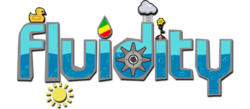
| |
| Developer(s) | Curve Studios |
| Publisher(s) | Nintendo |
| Genre(s) | Puzzle |
| Console/platform of origin | Wii (WiiWare) |
| First installment | Fluidity (2010) |
| Latest installment | Fluidity: Spin Cycle (2012) |
Fluidity (ぐるっとスプラッシュ!, All Round Splash!) is a puzzle game developed by Curve Studios released in 2010 for the WiiWare where the player controls a pool of water by tilting the Wii Remote. In 2012, a sequel by the name of Fluidity: Spin Cyle was released for the Nintendo 3DS eShop, which uses the Nintendo 3DS's gyroscope. Unlike the original game, Spin Cycle was released in Japan.
Eddy from Fluidity: Spin Cycle appears as a trophy in Super Smash Bros. for Nintendo 3DS.
Eddy returns as a spirit in Super Smash Bros. Ultimate.
Fossil Fighters
| Fossil Fighters (universe) | |
|---|---|
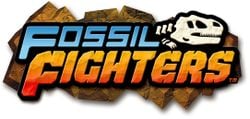
| |
| Developer(s) | Nintendo Red Entertainment Spike Chunsoft |
| Publisher(s) | Nintendo |
| Genre(s) | Role-playing |
| Console/platform of origin | DS |
| First installment | Fossil Fighters (2008) |
| Latest installment | Fossil Fighters: Frontier (2014) |
Fossil Fighters (カセキホリダー, Fossil Diggers) is a series of action RPG games for the DS and 3DS where players unearth and reanimate dinosaurs to fight in tournaments.
A shared trophy of Jura and Tria, the central characters in Fossil Fighters: Frontier (along with Nibbles in the same trophy), appears in Super Smash Bros. for Nintendo 3DS.
Nibbles returns as a solo spirit in Super Smash Bros. Ultimate, in addition to the T-Rex Vivosaur as it appears in the first game. A music track from Fossil Fighters: Frontier, titled Battle Start - Fossil Fighters: Frontier, appears, only playing on Summit, Duck Hunt, and stages from non-playable universes
Freakyforms
| Freakyforms (universe) | |
|---|---|

| |
| Developer(s) | Asobism |
| Publisher(s) | Nintendo |
| Genre(s) | Simulation |
| Console/platform of origin | 3DS (eShop) |
| First installment | Freakyforms: Your Creations, Alive! (2011) |
| Latest installment | Freakyforms Deluxe: Your Creations, Alive! (2012) |
Freakyforms (クリエイトーイ, Creatoy) is a unique series released for the Nintendo 3DS eShop and retail Nintendo 3DS (North America and PAL regions only) about creating and customizing a planet of creatures called Formees, which are created by putting together "forms" of different shapes and sizes.
King Roy, the damsel-in-distress of Freakyforms Deluxe's dungeons, appears as a trophy in Super Smash Bros. for Nintendo 3DS. A remix called Freakyforms: Your Creations, Alive! Medley appears on the downloadable Miiverse stage in Super Smash Bros. for Wii U.
Freakyforms: Your Creations, Alive! Medley returns in Super Smash Bros. Ultimate, now only playing on Summit, Duck Hunt, and stages from non-playable universes.
GiFTPiA
| GiFTPiA (universe) | |
|---|---|
| Developer(s) | Skip Ltd. |
| Publisher(s) | Nintendo |
| Genre(s) | Adventure Social simulation |
| Console/platform of origin | GameCube |
| First installment | GiFTPiA (2003) |
| Latest installment | GiFTPiA (2003) |
GiFTPiA (ギフトピア, GiFTPiA) is an adventure-social simulation game for the Nintendo GameCube in which the main protagonist and resident of Nanashi Island, Pockle, is arrested for missing his coming-of-age ceremony and is fined five million "Mane" (the game's main currency). Thus, he must pay off his debt and face heavy restrictions, all the while interacting with and helping out other people living on the island.
Mappo, the robot police chief, appears as a spirit in Super Smash Bros. Ultimate.
Hajimari no Mori
| Hajimari no Mori (universe) | |
|---|---|

| |
| Developer(s) | Pax Softnica |
| Publisher(s) | Nintendo |
| Genre(s) | Adventure |
| Console/platform of origin | Super Famicom (Nintendo Power) |
| First installment | Famicom Bunko: Hajimari no Mori (1999) |
| Latest installment | Famicom Bunko: Hajimari no Mori (1999) |
Famicom Bunko: Hajimari no Mori (ファミコン文庫 はじまりの森, Famicom Storybook: Origin of the Forest) is an adventure game which was only released in Japan for the Super Famicom via the Nintendo Power download service (Not to be confused with the North American magazine of the same name). The plot follows a young boy who travels to the countryside to live with his grandfather for a time. The boy then meets a young girl named Komurasaki after he arrives and tries to find her again as the story continues.
Komurasaki, referred to as Girl from Hajimari no Mori, appears as a spirit in Super Smash Bros. Ultimate.
HarmoKnight
| HarmoKnight (universe) | |
|---|---|
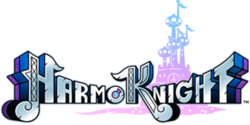
| |
| Developer(s) | Game Freak |
| Publisher(s) | Nintendo |
| Genre(s) | Rhythm |
| Console/platform of origin | 3DS (eShop) |
| First installment | HarmoKnight (2012) |
| Latest installment | HarmoKnight (2012) |
HarmoKnight (リズムハンター ハーモナイト, Rhythm Hunter: HarmoKnight) is a rhythm game released for the Nintendo 3DS eShop developed by Game Freak. The game stars a young boy named Tempo who is tasked with saving the world of Melodia from a race of malevolent creatures known as Noizoids by whacking them away with his magical staff. The game also includes five bonus stages featuring characters and music from the Pokémon series.
Tempo appears as a trophy in Super Smash Bros. for Nintendo 3DS and as a spirit in Super Smash Bros. Ultimate.
Hotel Dusk
| Hotel Dusk (universe) | |
|---|---|

| |
| Developer(s) | Cing |
| Publisher(s) | Nintendo |
| Genre(s) | Visual novel |
| Console/platform of origin | DS |
| First installment | Hotel Dusk: Room 215 (2007) |
| Latest installment | Last Window: The Secret of Cape West (2010) |
Hotel Dusk (ウィッシュルーム, Wish Room) is a visual novel for the Nintendo DS that involves a detective named Kyle Hyde having to unravel the lore behind a mysterious hotel room. In 2010, the game got a sequel also for the Nintendo DS released only in Japan and Europe called Last Window: The Secret of Cape West, which was the last game Cing made before the company went bankrupt.
Kyle Hyde has a trophy in Super Smash Bros. Brawl that is noteworthy due to the fact that it is the only animated trophy in Smash Bros. history. Kyle Hyde, Dunning Smith, and Mila all appear as stickers.
Kyle Hyde returns as a spirit in Super Smash Bros. Ultimate.
Ice Hockey
| Ice Hockey (universe) | |
|---|---|
| Developer(s) | Nintendo |
| Publisher(s) | Nintendo |
| Genre(s) | Sports |
| Console/platform of origin | NES (Famicom Disk System) |
| First installment | Ice Hockey (1988) |
| Latest installment | Ice Hockey (1988) |
Ice Hockey (アイスホッケー, Ice Hockey) is a hockey game released for the Famicom Disk System in Japan and NES in North America and the PAL regions.
A Fat Hockey Player (As he appears in the Famicom Disk System artwork) appears as a sticker in Super Smash Bros. Brawl.
The Fat Hockey Player returns as a shared spirit with a fatter hockey player and a tall hockey player in Super Smash Bros. Ultimate (with all three using their art from the Disk System cover).
Kiki Trick
| Kiki Trick (universe) | |
|---|---|

| |
| Developer(s) | Nintendo |
| Publisher(s) | Nintendo |
| Genre(s) | Minigame |
| Console/platform of origin | Wii |
| First installment | Kiki Trick (2012) |
| Latest installment | Kiki Trick (2012) |
Kiki Trick (キキトリック, Kiki Trick) is an audio-based game in which the player must listen to a sentence with garbled speech, and figure out a word that would complete the sentence.
Noise, the host of the game, appears as a spirit in Super Smash Bros. Ultimate.
Kurikin Nano Island Story
| Kurikin Nano Island Story (universe) | |
|---|---|
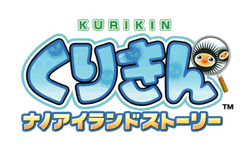
| |
| Developer(s) | MediaKite |
| Publisher(s) | Nintendo |
| Genre(s) | Role-playing |
| Console/platform of origin | DS |
| First installment | Kurikin Nano Island Story (2007) |
| Latest installment | Kurikin Nano Island Story (2007) |
Kurikin Nano Island Story (くりきん ナノアイランドストーリー, Kurikin Nano Island Story) is a role-playing game for the Nintendo DS in which the player, a student attending a school called "Nano Academy", trains several types of Bacteria. There are around 100 species of them.
A Bacteria (Referred to as "Kurikin") appears as a spirit in Super Smash Bros. Ultimate.
Looksley's Line Up
| Looksley's Line Up (universe) Tales in a Box: Hidden shapes in perspective! (universe) | |
|---|---|
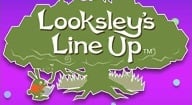
| |
| Developer(s) | Good-Feel |
| Publisher(s) | Nintendo |
| Genre(s) | Hidden Object |
| Console/platform of origin | DSi (DSiWare) |
| First installment | Looksley's Line Up (2010) |
| Latest installment | Looksley's Line Up (2010) |
Looksley's Line Up (立体かくし絵 アッタコレダ, Hidden 3D Image: There It Is!) is a hidden object game developed by Good-Feel released for the Nintendo DSiWare service. The player must tilt their Nintendo DSi in certain ways to find hidden letters and objects; the game uses the DSi's camera to determine the angle at which it is being held.
The titular character Looksley appears as a spirit in Super Smash Bros. Ultimate.
Mach Rider
| Mach Rider (universe) | |
|---|---|

| |
| Developer(s) | Nintendo |
| Publisher(s) | Nintendo |
| Genre(s) | Driving Action |
| Console/platform of origin | NES |
| First installment | Mach Rider (1985) |
| Latest installment | Vs. Mach Rider (1985) |
Mach Rider (マッハライダー, Mach Rider) is a driving game that was one of the launch titles for the original NES.
The titular character, Mach Rider, appears in as a trophy in Super Smash Bros. Melee. A remix of several music tracks from the game, simply called Mach Rider, can be played on the Big Blue stage.
The titular character returns as a sticker in Super Smash Bros. Brawl. The Mach Rider track returns, this time under the title Mach Rider (Melee) and playing on Port Town Aero Dive.
The Mach Rider track once again returns in Super Smash Bros. for Wii U, now with its title restored to simply Mach Rider and playing on the Wrecking Crew stage.
The titular character returns as a spirit in Super Smash Bros. Ultimate. Mach Rider once again returns, now only playing on Summit, Duck Hunt, and stages from non-playable universes.
Magical Starsign
| Magical Starsign (universe) | |
|---|---|

| |
| Developer(s) | Brownie Brown |
| Publisher(s) | Nintendo |
| Genre(s) | Role-playing |
| Console/platform of origin | Game Boy Advance |
| First installment | Magical Vacation (2001) |
| Latest installment | Magical Starsign (2006) |
Magical Starsign (マジカルバケーション, Magical Vacation) is a duology of fantasy RPGs for Game Boy Advance and the DS, developed by Brownie Brown, that takes place around various students at the magic school Will-O-Wisp who each control a different element.
Mokka, a party member in both games, as well as the species Putty and Pyrite, appear as trophies in Super Smash Bros. Brawl. The series is represented with several stickers that take artwork from both games, with Magical Vacation being represented with its male protagonist, its female protagonist, and Kirsh, and Magical Starsign being represented with its male protagonist, Mokka, Putty, an HP Pot, and a Sparrow
The protagonists of Magical Vacation, Putty, and Mokka all return as spirits (with the protagonists being shared spirits) in Super Smash Bros. Ultimate.
Make 10: A Journey of Numbers
| Make 10: A Journey of Numbers (universe) | |
|---|---|

| |
| Developer(s) | Muu Muu |
| Publisher(s) | Nintendo |
| Genre(s) | Puzzle Educational |
| Console/platform of origin | DS |
| First installment | Make 10: A Journey of Numbers (2007) |
| Latest installment | Make 10: A Journey of Numbers (2007) |
Make 10: A Journey of Numbers (タシテン たして10にする物語, Tashiten: A Journey to Make 10) is a mathematics puzzle game published by Nintendo in 2007.
Num Diddly, the player's guide from this game, appears as a spirit in Super Smash Bros. Ultimate.
Marvelous
| Marvelous (universe) | |
|---|---|
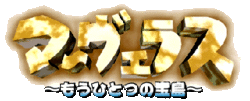
| |
| Developer(s) | Nintendo |
| Publisher(s) | Nintendo |
| Genre(s) | Role-playing |
| Console/platform of origin | Super Famicom (Satellaview) |
| First installment | BS Marvelous: Time Athletic (1996) |
| Latest installment | BS Marvelous: Camp Arnold (1996) |
Marvelous (マーヴェラス, Marvelous) is a series of action-RPGs for the Super Famicom that got its start as a 4-part download-exclusive game for the Satellaview. The series would later get a physical cartridge game titled "Marvelous: Mōhitotsu no Takarajima", which is in a similar vein to The Legend of Zelda: A Link to the Past and is notable for being the first game to be directed by Eiji Aonuma. In the game, three boys explore an island and solve puzzles in hopes of finding the buried treasure of a legendary pirate. One of the Satellaview games, BS Marvelous Camp Arnold, was later reworked into Navi Trackers, a minigame exclusive to the Japanese and Korean versions of The Legend of Zelda: Four Swords Adventures.
The three main protagonists, Dion, Max, and Jack, appear together as a shared spirit in Super Smash Bros. Ultimate.
Mole Mania
| Mole Mania (universe) | |
|---|---|
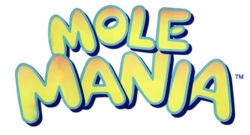
| |
| Developer(s) | Nintendo Pax Softnica |
| Publisher(s) | Nintendo |
| Genre(s) | Puzzle |
| Console/platform of origin | Game Boy |
| First installment | Mole Mania (1996) |
| Latest installment | Mole Mania (1996) |
Mole Mania (モグラ〜ニャ, Mogurānya) is a top-down puzzle game for the Game Boy in which a mole wearing glasses named Muddy Mole must save his kidnapped family, a wife and 7 children, from a cabbage farmer named Jinbe by solving puzzles involving pushing or throwing black balls into an exit, as well as fighting puzzle-based boss fights.
Muddy Mole appears as a spirit in Super Smash Bros. Ultimate.
Napoleon
| Napoleon (universe) L'Aigle de Guerre (universe) | |
|---|---|
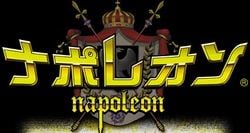
| |
| Developer(s) | Genki |
| Publisher(s) | Nintendo |
| Genre(s) | Real-time strategy |
| Console/platform of origin | Game Boy Advance |
| First installment | Napoleon (2001) |
| Latest installment | Napoleon (2001) |
Napoleon (ナポレオン, Napoleon), released in France under the title L'Aigle de Guerre (The Eagle of War), is a real-time strategy game released on the Game Boy Advance in which the player controls Napoleon Bonaparte and must lead the French revolutionary army to battle against the British, managing the troops and giving orders as the battles unfold.
Alessandro Inzaghi, Napoleon's old friend and first commander, appears as a spirit in Super Smash Bros. Ultimate.
NES Remix
| NES Remix (universe) | |
|---|---|

| |
| Developer(s) | Nintendo indieszero |
| Publisher(s) | Nintendo |
| Genre(s) | Various, retro |
| Console/platform of origin | Wii U (eShop) |
| First installment | NES Remix (2013) |
| Latest installment | Ultimate NES Remix (2014) |
NES Remix (ファミコンリミックス, Famicom Remix) is a game series that challenges the player to complete a variety of short tasks within classic NES titles. NES Remix was released on the Wii U eShop in 2013 and received a sequel the following year. Both games were then released on one disc as a full retail Wii U game titled NES Remix Pack. A third game titled Ultimate NES Remix was also released for the Nintendo 3DS.
The music track Title Theme (NES Remix 2) is included as a track that can play on the Duck Hunt stage in Super Smash Bros. for Wii U.
Title Theme (NES Remix 2), now called Title Theme - NES Remix 2, returns in Super Smash Bros. Ultimate, now only playing on Summit, Duck Hunt, and stages from non-playable universes.
Prior to post game additions, NES Remix was the newest universe represented in Super Smash Bros. for Wii U (as well as the newest universe represented in Super Smash Bros. 4 as a whole), with the first game releasing eleven months before the release of Super Smash Bros. for Wii U.
Nintendo Labo
| Nintendo Labo (universe) | |
|---|---|

| |
| Developer(s) | Nintendo |
| Publisher(s) | Nintendo |
| Genre(s) | Interactive Toy |
| Console/platform of origin | Switch |
| First installment | Nintendo Labo Variety Kit, Robot Kit (2018) |
| Latest installment | Nintendo Labo VR Kit (2019) |
Nintendo Labo (ニンテンドーラボ, Nintendo Labo) is an interactive creation kit where players can construct toys out of cardboard that can interact with the game software.
The constructible outfit included in the Nintendo Labo Robot Kit appears as a costume for the Mii Brawler in Super Smash Bros. Ultimate. Additionally, spirits of the Toy-Con Robot, the Toy-Con Car, the Toy-Con VR Goggles and the three mascot characters Professor Riggs, Plaise, and Lerna all appear as part of the "Nintendo Labo: Smash Kit" Spirit Board event.
Compatibility with the VR Goggles was added in version 3.1.0 of Ultimate.
Nintendouji
| Nintendouji (universe) | |
|---|---|

| |
| Developer(s) | Grounding, inc. |
| Publisher(s) | Nintendo |
| Genre(s) | Dungeon crawler |
| Console/platform of origin | 3DS (Released as a DSiWare title on the eShop) |
| First installment | Nintendouji (2013) |
| Latest installment | Nintendouji (2013) |
Nintendouji (任天童子, Nintendouji) is a Japan-only dungeon crawler starring a titular character released in 2013 for the Nintendo 3DS eShop (albeit as a DSiWare game) exclusive to Gold and Platinum Club Nintendo members; it was re-released in 2015 as one of the final set of Club Nintendo rewards in Japan.
The titular character appears as a trophy in Super Smash Bros. for Nintendo 3DS.
The titular character returns as a spirit in Super Smash Bros. Ultimate, this time under the name "Kageshina Kurabe".
Number Battle
| Number Battle (universe) Sujin Taisen: Number Battles (universe) | |
|---|---|

| |
| Developer(s) | Mitchell |
| Publisher(s) | Nintendo |
| Genre(s) | Puzzle Strategy |
| Console/platform of origin | DS |
| First installment | Sujin Taisen (2007) |
| Latest installment | Number Battle (2009) |
Number Battle (数陣タイセン, Number Battle) is a puzzle-strategy game in which the player must place tiles with numbers that range from 1-5 on the board so that paths join and the numbers can create "number sequences". The game was first released as a physical DS game in Japan in 2007, and later a DSiWare game in 2009, in which the latter received a European release in the same year and a North American release in 2010.
Hsien appears as a spirit in Super Smash Bros. Ultimate.
Ouendan
| Ouendan (universe) Elite Beat Agents (universe) | |
|---|---|
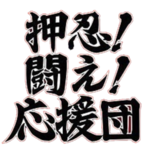 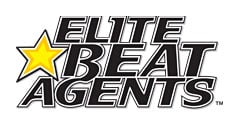
| |
| Developer(s) | iNiS |
| Publisher(s) | Nintendo |
| Genre(s) | Music |
| Console/platform of origin | DS |
| First installment | Osu! Tatakae! Ouendan (2005) |
| Latest installment | Moero! Nekketsu Rhythm Damashii Osu! Tatakae! Ouendan 2 (2007) |
Ouendan (応援団, Cheer Squad), reworked as Elite Beat Agents for the only game of the series released in the West, is a series of music-based rhythm action games developed by iNiS for the Nintendo DS. The games revolve around Japanese cheerleaders/agents in black singing and dancing to famous songs by several artists to assist people in need.
Both Ryuta Ippongi and Hayato Saionji from Ouendan appear in Super Smash Bros. Brawl as a shared trophy while Agent J, Agent Morris, and Agent Derek from Elite Beat Agents appear in the same game as a shared trophy as well. All of the above characters also appear as stickers in Brawl, as do the characters Hajime Tanaka, Kai Doumeki, and Sayaka Amemiya from Ouendan, and Commander Kahn from Elite Beat Agents.
Ryuta Ippongi and Sayaka Amemiya from Ouendan both return as spirits in Super Smash Bros. Ultimate, this time sharing a spot with back-up dancers Atsushi Saitou & Ittetsu Suzuki for Ryuta and Aoi Kanda & Anna Lyndhurst for Sayaka, respectively. Agents J, Morris, and Derek from Elite Beat Agents also return as a shared spirit, alongside newcomers to the Smash series, Starr, Foxx, and Missy of the Elite Beat Divas as a shared spirit.
Elite Beat Agents is the only Western-exclusive universe to receive representation in Smash.
Pandora's Tower
| Pandora's Tower (universe) | |
|---|---|
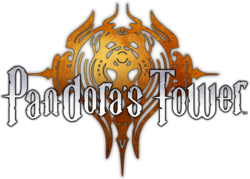
| |
| Developer(s) | Ganbarion Nintendo |
| Publisher(s) | Nintendo Xseed Games |
| Genre(s) | Action role-playing |
| Console/platform of origin | Wii |
| First installment | Pandora's Tower (2011) |
| Latest installment | Pandora's Tower (2011) |
Pandora's Tower (パンドラの塔 君のもとへ帰るまで, Pandora's Tower: Until I Return to Your Side) is an action RPG for the Wii about a 22-year-old boy named Aeron who has to save an 18-year-old girl named Elena from transforming into a hideous beast by feeding her the flesh of monsters in 13 towers.
Both Aeron and Elena appear as a shared trophy in Super Smash Bros. for Wii U.
Aeron and Elena both return as separate spirits in Super Smash Bros. Ultimate.
Project Hacker
| Project Hacker (universe) | |
|---|---|

| |
| Developer(s) | Red Entertainment |
| Publisher(s) | Nintendo |
| Genre(s) | Point and click Adventure |
| Console/platform of origin | DS |
| First installment | Project Hacker: Kakusei (2006) |
| Latest installment | Project Hacker: Kakusei (2006) |
Project Hacker: Kakusei (プロジェクトハッカー 覚醒, Project Hacker: Awakening) is a point-and-click-adventure game for the Nintendo DS in which the player takes control of a hacker, in which he and his detective partner, Rina, are employed by the internet crime-fighting GIS.
Satoru Amatsubo, the main protagonist, appears as a spirit in Super Smash Bros. Ultimate.
Pushmo
| Pushmo (universe) Pullblox (universe) | |
|---|---|
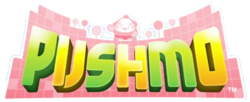
| |
| Developer(s) | Intelligent Systems |
| Publisher(s) | Nintendo |
| Genre(s) | Puzzle Platformer |
| Console/platform of origin | 3DS (eShop) |
| First installment | Pushmo (2011) |
| Latest installment | Stretchmo (2015) |
Pushmo (引ク押ス, Pull Push) is a platformer puzzle franchise for the 3DS eShop and Wii U eShop where the main character, Mallo, has to move blocks to create steps to rescue children or birds trapped in various structures, sometimes designed to resemble popular Nintendo characters.
Mallo appears as a trophy in Super Smash Bros. for Nintendo 3DS.
Mallo returns as a spirit in Super Smash Bros. Ultimate. A music track from Stretchmo, Welcome Center, appears, only playing on Summit, Duck Hunt, and stages from non-playable universes.
Ring Fit Adventure
| Ring Fit Adventure (universe) | |
|---|---|
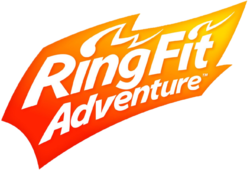
| |
| Developer(s) | Nintendo |
| Publisher(s) | Nintendo |
| Genre(s) | Role-playing Exergame |
| Console/platform of origin | Switch |
| First installment | Ring Fit Adventure (2019) |
| Latest installment | Ring Fit Adventure (2019) |
Ring Fit Adventure (リングフィット アドベンチャー, Ring Fit Adventure) is a role-playing exergame released on the Nintendo Switch in 2019. Using the Ring-Con and Leg Strap special accessories, the player does various fitness based activities to fight monsters and take down the body-building dragon Dragaux.
On March 13th, 2020, both genders of the Ring Fit Trainee (the playable character), the Ring, and Dragaux appeared as spirits in the spirit board event Spirits Fit for a Fight in Ultimate. This is notable, as the Ring Fit Trainee is notably unnamed officially in Ring Fit Adventure (as the player has the option to name them), making Ultimate the first game to give them a proper name.
With the addition of downloadable content, Ring Fit Adventure became the newest universe to be represented in Super Smash Bros. Ultimate, as it released 10 months after the release of Ultimate.
Rusty's Real Deal Baseball
| Rusty's Real Deal Baseball (universe) | |
|---|---|

| |
| Developer(s) | Nintendo |
| Publisher(s) | Nintendo |
| Genre(s) | Sports |
| Console/platform of origin | 3DS (eShop) |
| First installment | Rusty's Real Deal Baseball (2013) |
| Latest installment | Rusty's Real Deal Baseball (2013) |
Rusty's Real Deal Baseball (だるめしスポーツ店, Darumeshi Sports Shop) is a collection of 10 baseball minigames released for the Nintendo 3DS eShop. An interesting fact is that the game's titual character got a different name and design between the Japanese and American versions.
Like Ouendan and the Elite Beat Agents in Super Smash Bros. Brawl, both Darumeshi Sports's Inuji Darumeshi and Rusty's Real Deal Baseball's Rusty Slugger appear as trophies in Super Smash Bros. for Nintendo 3DS, no matter the region.
Both Inuji Darumeshi and Rusty Slugger return as spirits in Super Smash Bros. Ultimate.
Prior to post game additions, Rusty's Real Deal Baseball was the newest universe represented in Super Smash Bros. for Nintendo 3DS, releasing one year and an additional month before the release of Super Smash Bros. for Nintendo 3DS.
Sakura Samurai
| Sakura Samurai (universe) Hana Samurai (universe) | |
|---|---|
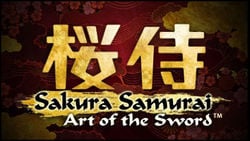
| |
| Developer(s) | Grounding, Inc. |
| Publisher(s) | Nintendo |
| Genre(s) | Action-adventure |
| Console/platform of origin | 3DS (eShop) |
| First installment | Sakura Samurai: Art of the Sword (2011) |
| Latest installment | Sakura Samurai: Art of the Sword (2011) |
Sakura Samurai: Art of the Sword (ひらり 桜侍, Hirari Sakura Samurai) is an action-adventure game on the Nintendo 3DS eShop set in feudal Japan where a samurai, who was trained by a kappa, tries to save the princess named "Cherry Blossom" from an evil warlord.
Sakura Samurai, the protagonist, is represented as a trophy in Super Smash Bros. for Nintendo 3DS. A remix of a music track from the game, Boss 1 (Sakura Samurai: Art of the Sword), is available on the Luigi's Mansion stage in Super Smash Bros. for Wii U.
Sakura Samurai returns as a spirit in Super Smash Bros. Ultimate. Boss 1 - Sakura Samurai: Art of the Sword returns, now only playing on Summit, Duck Hunt, and stages from non-playable universes.
Sennen Kazoku
| Sennen Kazoku (universe) | |
|---|---|
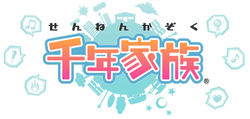
| |
| Developer(s) | indieszero |
| Publisher(s) | Nintendo |
| Genre(s) | Life simulation |
| Console/platform of origin | Game Boy Advance |
| First installment | Sennen Kazoku (2005) |
| Latest installment | Sennen Kazoku (2005) |
Sennen Kazoku (千年家族, Thousand Year Family) is a life-simulation game for the Game Boy Advance released exclusively in Japan starring an angel named Cupid who has been sent by God (Kamisama) to protect a family from danger.
Cupid (referred to as "Cupit"), Kamisama, Akuma, and an Aijou Boom no Ya appear as stickers in Super Smash Bros. Brawl.
Cupid returns as a spirit in Super Smash Bros. Ultimate.
| Shaberu! DS Oryōri Navi (universe) Personal Trainer: Cooking (universe) Cooking Guide: Can't Decide What to Eat? (universe) | |
|---|---|

| |
| Developer(s) | indieszero Nintendo Koei |
| Publisher(s) | Nintendo Koei |
| Genre(s) | Edutainment |
| Console/platform of origin | DS |
| First installment | Shaberu! DS Oryōri Navi (2006) |
| Latest installment | America's Test Kitchen: Let's Get Cooking (2010) |
Shaberu! DS Oryōri Navi (しゃべる!DSお料理ナビ, It Talks! DS Cooking Navigator) is a digital cookbook for the DS, the sequel to which was released outside of Japan as Personal Trainer: Cooking in North America (under the Personal Trainer series) and Cooking Guide: Can't Decide What to Eat? in Europe.
The Chef appears as a collectible sticker in Super Smash Bros. Brawl. A remix of the title theme from the game appears in Super Smash Bros. Brawl in the My Music for PictoChat under the partially-translated title Shaberu! DS Cooking Navi.
The Chef returns as a spirit in Super Smash Bros. Ultimate. The Shaberu! DS Cooking Navi track returns, now under the title Personal Trainer: Cooking and only playing on Summit, Duck Hunt, and stages from non-playable universes.
Shin Onigashima
| Shin Onigashima (universe) | |
|---|---|

| |
| Developer(s) | Nintendo Pax Softnica |
| Publisher(s) | Nintendo |
| Genre(s) | Adventure |
| Console/platform of origin | Famicom (Disk System) |
| First installment | Shin Onigashima (1987) |
| Latest installment | Heisei Shin Onigashima (1997) |
Shin Onigashima (新・鬼ヶ島, New Island of Oni) is a text-based adventure game that borrows elements from traditional Japanese fairytales, such as Momotarō and Princess Kaguya. It is part of the Famicom Fairytales series, also consisting of Yūyūki.
The main characters, Donbe & Hikari, appear as a shared trophy in Super Smash Bros. Melee.
Donbe returns as a solo sticker in Super Smash Bros. Brawl. A remix of two music tracks from the game, titled Shin Onigashima, appears in the My Music for Summit in Super Smash Bros. Brawl.
The Shin Onigashima track returns in Super Smash Bros. for Wii U, now called Shin Onigashima Medley and being moved to the Boxing Ring stage.
Both Donbe & Hikari return as a shared spirit in Super Smash Bros. Ultimate. In addition, there is also a shared spirit of Donbe & Hikari as they appear in the second disk of the game, Shin Onigashima Kouhen. Shin Onigashima Medley once again returns, now only playing on Summit, Duck Hunt, and stages from non-playable universes.
Slide Adventure MAGKID
| Slide Adventure MAGKID (universe) | |
|---|---|
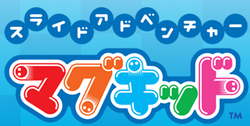
| |
| Developer(s) | Nintendo Agenda |
| Publisher(s) | Nintendo |
| Genre(s) | Action |
| Console/platform of origin | DS |
| First installment | Slide Adventure MAGKID (2007) |
| Latest installment | Slide Adventure MAGKID (2007) |
Slide Adventure MAGKID (スライドアドベンチャー マグキッド, Slide Adventure MAGKID) is a Japan-only game released for the Nintendo DS that stars a tiny sentient magnet named Magkid and requires the Slide Controller (a peripheral for the Nintendo DS that functions as a mouse).
Magkid and the Midori Mushi enemy appear as stickers in Super Smash Bros. Brawl.
Magkid returns as a spirit in Super Smash Bros. Ultimate.
Slide Adventure MAGKID is the newest universe represented in Super Smash Bros. Brawl, releasing 5 months before the release of Brawl.
Snipperclips
| Snipperclips (universe) | |
|---|---|

| |
| Developer(s) | SFB Games |
| Publisher(s) | Nintendo |
| Genre(s) | Puzzle |
| Console/platform of origin | Switch (eShop) |
| First installment | Snipperclips (2017) |
| Latest installment | Snipperclips Plus (2017) |
Snipperclips (いっしょにチョキッと スニッパーズ, Cutting Together Snippers) is a Nintendo Switch game where players solve physics-based puzzles by "snipping" sections out from each other.
Snip and Clip, the two playable characters from the game, both appear as a shared spirit in Super Smash Bros. Ultimate. A remix of the music featured in the game's Noisy Notebook stages is included, only playing on Summit, Duck Hunt, and stages from non-playable universes.
Soccer
| Soccer (universe) | |
|---|---|
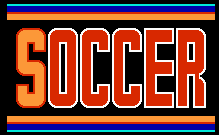
| |
| Developer(s) | Nintendo |
| Publisher(s) | Nintendo |
| Genre(s) | Sports |
| Console/platform of origin | NES |
| First installment | Soccer (1985) |
| Latest installment | Soccer (1985) |
Soccer (サッカー, Soccer) is an association football game released on the NES.
A portion of the music during gameplay appears in the Famicom Medley track in Super Smash Bros. Brawl.
In both Brawl and Super Smash Bros. for Wii U, the Soccer Ball item's trophy states that its debut game is Soccer for the NES.
Soma Bringer
| Soma Bringer (universe) | |
|---|---|

| |
| Developer(s) | Monolith Soft |
| Publisher(s) | Nintendo |
| Genre(s) | Role-playing |
| Console/platform of origin | DS |
| First installment | Soma Bringer (2008) |
| Latest installment | Soma Bringer (2008) |
Soma Bringer (ソーマブリンガー, Soma Bringer) is a role-playing game for the Nintendo DS released only in Japan developed by Monolith Soft.
The Attack (Soma Bringer) theme plays on the Coliseum stage in Super Smash Bros. for Wii U.
Welt, the main protagonist, as well as Idea, one of the main party members, both appear as spirits in Super Smash Bros. Ultimate. Attack - Soma Bringer returns, now only playing on Summit, Duck Hunt, and stages from non-playable universes.
Stunt Race FX
| Stunt Race FX (universe) | |
|---|---|

| |
| Developer(s) | Nintendo Argonaut Software |
| Publisher(s) | Nintendo |
| Genre(s) | Racing |
| Console/platform of origin | SNES |
| First installment | Stunt Race FX (1994) |
| Latest installment | Stunt Race FX (1994) |
Stunt Race FX (ワイルドトラックス, Wild Trax) is a cartoon-style, 3D-racing video game for the SNES developed by Argonaut Software.
F-Type and Tractor Trailer appear as stickers in Super Smash Bros. Brawl.
F-Type and Tractor Trailer both return as spirits in Super Smash Bros. Ultimate.
There is an empty music track filename in Brawl's files labelled "snd_bgm_R01_WILDTRACKS", which is assumed to be part of this universe, since Wild Trax is the Japanese name for Stunt Race FX. However, the file itself is empty, as with other unused music files.
Style Savvy
| Style Savvy (universe) Style Boutique (universe) | |
|---|---|

| |
| Developer(s) | syn Sophia Nintendo |
| Publisher(s) | Nintendo |
| Genre(s) | Simulation |
| Console/platform of origin | DS |
| First installment | Style Savvy (2008) |
| Latest installment | Style Savvy: Styling Star (2017) |
Style Savvy (ガールズモード, Girls Mode) is a series of fashion simulation games where the player owns a clothing store, participates in fashion shows, and can put their custom clothes up for download for other players online.
Evie, the owner of the shop in the Japanese and PAL versions of Trendsetters, appears as a trophy in Super Smash Bros. for Nintendo 3DS, Interestingly, Evie is referred to as "Michaela" in the North American version of Smash 3DS, who was actually a distinct character that replaces Evie in North American versions of Trendsetters. There are also two music tracks that play on the Wuhu Island stage in Super Smash Bros. for Wii U: Style Savvy: Trendsetters and Pop Fashion Show.
The girl who appears on the Japanese cover of the first Style Savvy game (Referred to as "Shop Assistant") appears as a spirit in Super Smash Bros. Ultimate. Style Savvy: Trendsetters and Pop Fashion Show both return, along with the addition of the song Ring a Ding from Style Savvy: Styling Star ("Ring! Dong! Dang!" in the Japanese version). All three tracks only play on Summit, Duck Hunt, and stages from non-playable universes.
Sushi Striker
| Sushi Striker (universe) | |
|---|---|
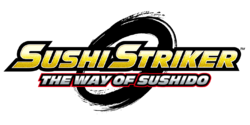
| |
| Developer(s) | Nintendo indieszero |
| Publisher(s) | Nintendo |
| Genre(s) | Action Puzzle |
| Console/platform of origin | 3DS Switch |
| First installment | Sushi Striker: The Way of Sushido (2018) |
| Latest installment | Sushi Striker: The Way of Sushido (2018) |
Sushi Striker: The Way of Sushido (超回転 寿司ストライカー The Way of Sushido, Super Rotating Sushi Striker: The Way of Sushido) is an action-puzzle game about the player attempting to revert a ban on sushi, all while battling opponents by matching up various sushi platters on conveyor belts to damage them.
The male version of the game's protagonist, Musashi, appears as a spirit in Super Smash Bros. Ultimate.
Prior to post game additions, Sushi Striker was the newest universe represented in Super Smash Bros. Ultimate, releasing six months before the release of Ultimate.
Sutte Hakkun
| Sutte Hakkun (universe) | |
|---|---|
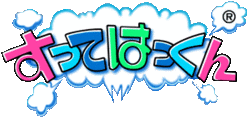
| |
| Developer(s) | indieszero Nintendo |
| Publisher(s) | Nintendo |
| Genre(s) | Platformer Puzzle |
| Console/platform of origin | Super Famicom (Satellaview) |
| First installment | Sutte Hakkun Event Version (1997) |
| Latest installment | Sutte Hakkun '98 Winter Event Version (1998) |
Sutte Hakkun (すってはっくん, Sutte Hakkun) is a Japan-exclusive puzzle game developed by indieszero and published by Nintendo. In the game, the protagonist Hakkun must absorb paint and spit it out into blocks to make them move, then gather rainbow shards to complete levels.
Hakkun appears as a spirit in Super Smash Bros. Ultimate.
Takt of Magic
| Takt of Magic (universe) | |
|---|---|

| |
| Developer(s) | Taito |
| Publisher(s) | Nintendo |
| Genre(s) | Role-playing |
| Console/platform of origin | Wii |
| First installment | Takt of Magic (2009) |
| Latest installment | Takt of Magic (2009) |
Takt of Magic (タクトオブマジック, Takt of Magic) is a Japan-exclusive role-playing game for the Wii developed by Taito. It is a spiritual successor to the Taito-developed Nintendo DS RPG, LostMagic.
Orville, the main protagonist, appears as a spirit in Super Smash Bros. Ultimate.
Tank Troopers
| Tank Troopers (universe) | |
|---|---|
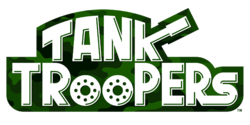
| |
| Developer(s) | Nintendo Vitei |
| Publisher(s) | Nintendo |
| Genre(s) | Action Third-person shooter |
| Console/platform of origin | 3DS (eShop) |
| First installment | Tank Troopers (2016) |
| Latest installment | Tank Troopers (2016) |
Tank Troopers (タンクトゥルーパーズ, Tank Troopers) is a tank-based action third-person shooter game released for the Nintendo 3DS eShop, in which players battle it out with over 30 customizable tanks.
The Garage theme appears as a music track in Super Smash Bros. Ultimate, only playing on Summit, Duck Hunt, and stages from non-playable universes.
Teleroboxer
| Teleroboxer (universe) | |
|---|---|

| |
| Developer(s) | Nintendo |
| Publisher(s) | Nintendo |
| Genre(s) | Fighting |
| Console/platform of origin | Virtual Boy |
| First installment | Teleroboxer (1995) |
| Latest installment | Teleroboxer (1995) |
Teleroboxer (テレロ ボクサー, Teleroboxer) is a fighting game released for the Virtual Boy, set in the 22nd century, in which the player uses a technology called "Telerobotics" in order to compete in a "Teleroboxing" tournament.
Harry, the main protagonist, appears as a spirit in Super Smash Bros. Ultimate.
Tennis
| Tennis (universe) | |
|---|---|

| |
| Developer(s) | Nintendo |
| Publisher(s) | Nintendo |
| Genre(s) | Sports |
| Console/platform of origin | NES |
| First installment | Tennis (1984) |
| Latest installment | Tennis (Game Boy) (1989) |
Tennis (テニス, Tennis) is a tennis video game developed and published by Nintendo for the NES and Game Boy.
A pair of Tennis Players from the game appear as a shared spirit in Super Smash Bros. Ultimate.
The Last Story
| The Last Story (universe) | |
|---|---|
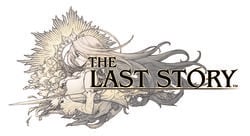
| |
| Developer(s) | Mistwalker AQ Interactive |
| Publisher(s) | Nintendo Xseed Games |
| Genre(s) | Action role-playing |
| Console/platform of origin | Wii |
| First installment | The Last Story (2011) |
| Latest installment | The Last Story (2011) |
The Last Story (ラストストーリー, Last Story) is a Wii RPG directed by Hironobu Sakaguchi, the original creator of Final Fantasy.
The main characters Zael and Calista both appear as trophies in Super Smash Bros. for Wii U.
Zael and Calista both return as spirits in Super Smash Bros. Ultimate.
The Wonderful 101
| The Wonderful 101 (universe) | |
|---|---|

| |
| Developer(s) | PlatinumGames |
| Publisher(s) | Nintendo PlatinumGames |
| Genre(s) | Action-adventure |
| Console/platform of origin | Wii U |
| First installment | The Wonderful 101 (2013) |
| Latest installment | The Wonderful 101 (2013) |
The Wonderful 101 (ザ・ワンダフル・ワン・オー・ワン, The Wonderful 101) is an action game developed by PlatinumGames. Players take control of a team of masked superheroes, known as the Wonderful 100 (pronounced One-Double Oh), to save Earth from GEATHJERK, a legion of alien invaders. By using the stylus (or right stick) to draw shapes, the player can have the heroes join together to assume a variety of forms known as "Unite Morphs" to combat enemies and solve puzzles.
The main character, Wonder-Red, appears as a trophy along with the six other main Wonderful Ones in Super Smash Bros. for Wii U. Two tracks from the game are also featured: ST01: Roll Out, Wonderful 100! plays on the Pilotwings stage, and Jergingha - Planet Destruction Form plays on the Mario Galaxy stage.
Wonder-Red and Wonder-Blue both return as spirits in Super Smash Bros. Ultimate. ST01: Roll Out, Wonderful 100! and Jergingha - Planet Destruction Form both return, now only playing on Summit, Duck Hunt, and stages from non-playable universes.
Thru
| Thru (universe) Ketzal's Corridors (universe) | |
|---|---|

| |
| Developer(s) | Keys Factory |
| Publisher(s) | Nintendo |
| Genre(s) | Puzzle |
| Console/platform of origin | Wii (WiiWare) |
| First installment | ThruSpace (2010) |
| Latest installment | Ketzal's Corridors (2011) |
Thru (すりぬけアナトウス, Slip-Through Anatos) is a series of puzzle games where the player has to make floating shapes fit through holes by flipping or turning them. In 2010, the first game, called ThruSpace, released on the WiiWare on the Wii Shop Channel. The game then received a sequel for the Nintendo 3DS eShop called SpeedThru: Potzol's Puzzle in PAL regions and Ketzal's Corridors in North America.
A trophy depicting three Guardians (King Prana, King Leo, and King Croco) from Ketzal's Corridors appears in Super Smash Bros. for Nintendo 3DS.
Tomato Adventure
| Tomato Adventure (universe) | |
|---|---|
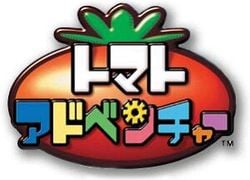
| |
| Developer(s) | AlphaDream |
| Publisher(s) | Nintendo |
| Genre(s) | Role-playing |
| Console/platform of origin | Game Boy Advance |
| First installment | Tomato Adventure (2002) |
| Latest installment | Tomato Adventure (2002) |
Tomato Adventure (トマトアドベンチャー, Tomato Adventure) is a role-playing game released on the Game Boy Advance in which the protagonist must save his sister from the evil King Abira, all while recruiting new allies and using unique toy-like weapons called "Gimmicks".
DeMille, the main protagonist, and the Tomatrio appear as spirits in Super Smash Bros. Ultimate.
Trace Memory
| Trace Memory (universe) Another Code (universe) | |
|---|---|
| Developer(s) | Cing |
| Publisher(s) | Nintendo |
| Genre(s) | Adventure |
| Console/platform of origin | DS |
| First installment | Trace Memory (2005) |
| Latest installment | Another Code: R – A Journey into Lost Memories (2009) |
Trace Memory (アナザーコード, Another Code) is a visual novel series debuting on the Nintendo DS that revolves around central character Ashley Robbins, who must solve puzzles to unlock the mystery surrounding her parents. In 2009, a sequel for the Wii was released only in Japan and Europe, which was one of the last games made by Cing before the company went bankrupt.
Ashley Robbins appears as a trophy in Super Smash Bros. Brawl. Ashley Robbins, Ashley viewing the DTS, Jessica, and the Captain appear as stickers in Super Smash Bros. Brawl.
Ashley Robbins returns as a spirit in Super Smash Bros. Ultimate, this time based on her appearance in Another Code: R – A Journey into Lost Memories.
Tsukutte Utau: Saru Band
| Tsukutte Utau: Saru Band (universe) | |
|---|---|
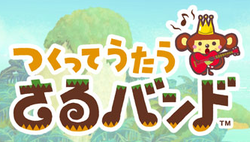
| |
| Developer(s) | Muu Muu |
| Publisher(s) | Nintendo |
| Genre(s) | Music |
| Console/platform of origin | DSi (DSiWare) |
| First installment | Tsukutte Utau: Saru Band (2010) |
| Latest installment | Tsukutte Utau: Saru Band (2010) |
Tsukutte Utau: Saru Band (つくってうたう さるバンド, Compose and Sing: Monkey Band) is a music creator game released for the DSiWare service in which the player can create their own songs for a band of monkeys to sing.
Prince Saruno, the main character, appears as a spirit in Super Smash Bros. Ultimate.
Urban Champion
| Urban Champion (universe) | |
|---|---|
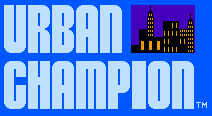
| |
| Developer(s) | Nintendo Arika Hamster Corporation |
| Publisher(s) | Nintendo Hamster Corporation |
| Genre(s) | Fighting |
| Console/platform of origin | NES |
| First installment | Urban Champion (1984) |
| Latest installment | Arcade Archives Urban Champion (2018) |
Urban Champion (アーバンチャンピオン, Urban Champion) is an early fighting game released for the NES.
The victory theme appears as the last song in the Famicom Medley track in Super Smash Bros. Brawl before the track starts all over.
The playable Fighter, as he appears on the Famicom and PAL covers, appears as a spirit in Super Smash Bros. Ultimate.
Interestingly, the main character of Urban Champion was one of the many considered characters for Melee to represent the NES era of games.
Volleyball
| Volleyball (universe) | |
|---|---|
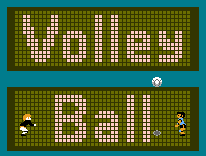
| |
| Developer(s) | Nintendo |
| Publisher(s) | Nintendo |
| Genre(s) | Sports |
| Console/platform of origin | NES (Famicom Disk System) |
| First installment | Volleyball (1986) |
| Latest installment | Volleyball (1986) |
Volleyball (バレーボール, Volleyball) is is a volleyball game released for the Famicom Disk System in Japan and NES in North America and the PAL regions.
A female volleyball player, as she appears on the Disk System cover, appears as a spirit in Super Smash Bros. Ultimate.
Wave Race
| Wave Race (universe) | |
|---|---|

| |
| Developer(s) | Nintendo Pax Softnica |
| Publisher(s) | Nintendo |
| Genre(s) | Racing |
| Console/platform of origin | Game Boy |
| First installment | Wave Race (1992) |
| Latest installment | Wave Race: Blue Storm (2001) |
Wave Race (ウエーブレース, Wave Race) is a series of jet-ski racing games released for Game Boy (Western regions only), Nintendo 64, and GameCube.
The flagship character of the latter two, Ryota Hayami, appears as a trophy in Super Smash Bros. Melee.
Ryota Hayami returns as a sticker in Super Smash Bros. Brawl, alongside Akari Hayami, Rob Haywood, and the logo for Wave Race: Blue Storm (all 4 using their Wave Race: Blue Storm artwork).
Ryota Hayami returns as a spirit in Super Smash Bros. Ultimate.
X
| X (universe) | |
|---|---|
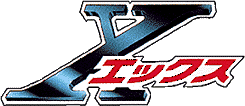
| |
| Developer(s) | Nintendo Argonaut Software Q-Games |
| Publisher(s) | Nintendo |
| Genre(s) | Vehicular combat |
| Console/platform of origin | Game Boy |
| First installment | X (1992) |
| Latest installment | X-Scape (2010) |
X (エックス, X) is a series of vehicular combat games. The series debuted with the Japan-only Game Boy game X, which would later get a sequel released on the DSiWare called X-Scape, which did receive an international release unlike its predecessor.
The Training Academy Coach appears as a sticker in Super Smash Bros. Brawl. A remix of a music track from the first game, Tunnel Scene (X), plays on the Lylat Cruise stage's My Music.
Tunnel Scene (X) returns in Super Smash Bros. for Wii U on the same stage. A music track from X-Scape, Tunnel Theme (X-Scape), appears in Super Smash Bros. for Wii U as music for the Orbital Gate Assault stage.
The Training Academy Coach returns as a spirit in Super Smash Bros. Ultimate, this time referred to as "Commander". Both Tunnel Scene - X and Tunnel Scene - X-Scape return, now only playing on Summit, Duck Hunt, and stages from non-playable universes.
Yakuman
| Yakuman (universe) | |
|---|---|
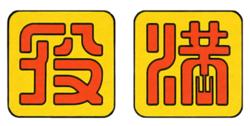
| |
| Developer(s) | Nintendo Hudson Soft Intelligent Systems Chatnoir Nd Cube Hamster Corporation |
| Publisher(s) | Nintendo Hamster Corporation |
| Genre(s) | Board game |
| Console/platform of origin | Famicom |
| First installment | Mahjong (1983) |
| Latest installment | Arcade Archives Vs. Mah-Jong (2020) |
Yakuman (役満, Yakuman) is a series of tabletop games based on the Chinese game of Mahjong released on multiple Nintendo consoles that first started with an electronic handheld game in 1983 made by Nintendo called Computer Mah-jong Yakuman. While the first two games on the Famicom were called Mahjong and 4 Nin Uchi Mahjong, respectively, the name Yakuman was first used in a Game Boy Mahjong game, and would be used in every succeeding Mahjong game published by Nintendo afterward (with the exceptions of Zoo-tto Mahjong! and Yōsuke Ide no Kenkō Mahjong DSi). While the Yakuman name has remained in Japan, Nintendo has included multiple Mahjong variations in their Clubhouse Games series, and Hamster Corporation has released Arcade Archives Vs. Mah-Jong, the arcade version of Nintendo's first Mahjong game.
The Yakuman Player on the cover of the Game Boy version appears as a sticker in Super Smash Bros. Brawl.
The same Yakuman Player from Brawl returns as a spirit in Super Smash Bros. Ultimate.
Yūyūki
| Yūyūki (universe) | |
|---|---|

| |
| Developer(s) | Nintendo Pax Softnica |
| Publisher(s) | Nintendo |
| Genre(s) | Adventure |
| Console/platform of origin | Famicom (Disk System) |
| First installment | Yūyūki (1989) |
| Latest installment | Yūyūki (1989) |
Yūyūki (遊遊記, Brave Brave Spirit) is a text-based adventure game loosely based on the Chinese novel Journey to the West. It is part of the Famicom Fairytales series, which also consists of Shin Onigashima.
Two of the main characters, Goku and Chao, appear as a shared spirit in Super Smash Bros. Ultimate. A remix of various themes from the game, titled Yūyūki Medley, appears, only playing on Summit, Duck Hunt, and stages from non-playable universes.
Zangeki no Reginleiv
| Zangeki no Reginleiv (universe) | |
|---|---|
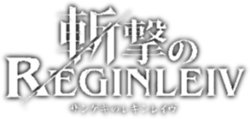
| |
| Developer(s) | Sandlot |
| Publisher(s) | Nintendo |
| Genre(s) | Action |
| Console/platform of origin | Wii |
| First installment | Zangeki no Reginleiv (2010) |
| Latest installment | Zangeki no Reginleiv (2010) |
Zangeki no Reginleiv (斬撃のREGINLEIV, Slashing Reginleiv) is a gory hack and slash game for the Wii about two young Norse deity siblings who battle giant monsters. The game is notable for being the first Nintendo-published game to receive a D (17+) rating from the CERO.
The game's two protagonists, Frey and Freya, appear as trophies in Super Smash Bros. for Wii U.
Both Frey and Freya return as a shared spirit in Super Smash Bros. Ultimate.
Nintendo hardware
- See also: Color TV-Game (universe), Game & Watch (universe), Nintendo DS (universe), Miiverse (universe)
A number of game consoles, a GameCube trophy and the item Super Scope in Melee, the item Super Scope and the music tracks Mii Channel and Wii Shop Channel through My Music in Brawl for the stage PictoChat all are based on Nintendo hardware of no specific universe. The Famicom Disk System's mascot, Diskun, cameos as a collectible trophy in Melee, and as a Spirit in Super Smash Bros. Ultimate. In Super Smash Bros. for Nintendo 3DS, a new remix of the Mii Channel plays on the Tomodachi Life stage under the title Mii Plaza. It and a remix of the Wii Shop Channel theme appear in Super Smash Bros. for Wii U, on the Miiverse stage.
Third-Party Series
After Burner
| After Burner (universe) | |
|---|---|
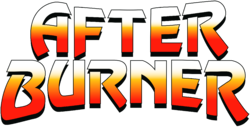
| |
| Developer(s) | Sega Various |
| Publisher(s) | Sega |
| Genre(s) | Combat flight simulator |
| Console/platform of origin | Arcade |
| First installment | After Burner (1987) |
| Latest installment | After Burner: Black Falcon (2007) |
After Burner (アフターバーナー, After Burner) is a series of combat flight simulation games by Sega.
The series is represented in Super Smash Bros. for Wii U via a remix from the Bayonetta series titled After Burner (∞ Climax Mix), which plays on Umbra Clock Tower.
After Burner (∞ Climax Mix) returns in Super Smash Bros. Ultimate on the same stage.
Assassin's Creed
| Assassin's Creed (universe) | |
|---|---|

| |
| Developer(s) | Ubisoft |
| Publisher(s) | Ubisoft |
| Genre(s) | Action-adventure |
| Console/platform of origin | Xbox 360 PlayStation 3 |
| First installment | Assassin's Creed (2007) |
| Latest installment | Assassin's Creed Odyssey (2018) |
Assassin's Creed (アサシンクリード, Assassin Creed) is a series of stealth action-adventure games developed by Ubisoft. The series follows the millennia-long clash between two factions: the Assassins and the Knights Templar, as Desmond Miles experiences the life of his ancestors to uncover their hidden secrets in the (then) near-future of 2012.
On January 16th, 2020, it was confirmed that Altaïr would be a Mii Costume for the Mii Swordfighter as part of Round 5 of DLC.
Baten Kaitos
| Baten Kaitos (universe) | |
|---|---|

| |
| Developer(s) | Monolith Soft tri-Crescendo |
| Publisher(s) | Namco Nintendo |
| Genre(s) | Role-playing |
| Console/platform of origin | GameCube |
| First installment | Baten Kaitos: Eternal Wings and the Lost Ocean (2003) |
| Latest installment | Baten Kaitos Origins (2006) |
Baten Kaitos (バテン・カイトス, Baten Kaitos) is a card battle RPG series for the Nintendo GameCube developed by Monolith Soft and tri-Crescendo. While the first game, Baten Kaitos: Eternal Wings and the Lost Ocean, was published by Namco, the prequel, Baten Kaitos Origins, was published by Nintendo in all regions it released in.
A remix of the main battle theme from Origins, The valedictory elegy, plays on the Gaur Plain stage in Super Smash Bros. for Wii U.
Sagi, the main protagonist of Origins, and Milly, a party member from Origins, appear as spirits in Super Smash Bros. Ultimate. The Valedictory Elegy returns, now only playing on Summit, Duck Hunt, and stages from non-playable universes.
BIT.TRIP
| BIT.TRIP (universe) | |
|---|---|
| Developer(s) | Gaijin Games Choice Provisions |
| Publisher(s) | Aksys Games Arc System Works Gaijin Games Choice Provisions |
| Genre(s) | Music |
| Console/platform of origin | Wii (WiiWare) |
| First installment | BIT.TRIP BEAT (2009) |
| Latest installment | Runner3 (2018) |
BIT.TRIP is a series of rhythm games by independent developer Gaijin Games (now known as Choice Provisions) starring an entity known as CommanderVideo.
CommanderVideo appears in Super Smash Bros. for Wii U as a trophy, using his three-dimensional appearance from BIT.TRIP Presents...Runner2: Future Legend of Rhythm Alien. This marks BIT.TRIP as the first series created by an independent developer to be represented in Smash.
Culdcept
| Culdcept (universe) | |
|---|---|

| |
| Developer(s) | OmiyaSoft |
| Publisher(s) | Various Sega Nintendo |
| Genre(s) | Board game |
| Console/platform of origin | Sega Saturn |
| First installment | Culdcept (1997) |
| Latest installment | Culdcept Revolt (2016) |
Culdcept (カルドセプト, Culdcept) is a series of card collecting board games released on multiple consoles with different publishers, such as Sega, Namco Bandai, and Nintendo.
The character Goligan appears as a trophy in Super Smash Bros. for Nintendo 3DS. A remix of the title theme from the first 3DS installment, known simply as Culdcept plays on the Boxing Ring stage in Super Smash Bros. for Wii U.
Goligan returns as a spirit in Super Smash Bros. Ultimate, as well as Culdra, the goddess and mascot of the series, and Allen, the main protagonist of Culdcept Revolt. The Culdcept track returns. Additionally, two tracks from Culdcept Revolt are added, Revolt -Striving for Hope- and Worthy Rival Battle. All three tracks only play on Summit, Duck Hunt, and stages from non-playable universes.
Cuphead
| Cuphead (universe) | |
|---|---|

| |
| Developer(s) | StudioMDHR |
| Publisher(s) | StudioMDHR |
| Genre(s) | Run-and-gun platformer |
| Console/platform of origin | Xbox One Microsoft Windows |
| First installment | Cuphead (2017) |
| Latest installment | Cuphead: Tesla Edition (2019) |
Cuphead (カップヘッド, Cuphead) is a 2D sidescrolling run-and-gun platformer developed by the Canada-based StudioMDHR and inspired by series such as Contra, Gunstar Heroes, and Gradius. Notably, the art style is rooted in 1930s rubber-hose cartoons inspired by the works of Disney and Fleischer Studios. The story follows two brothers, Cuphead and Mugman, who lost their souls in a bet with the Devil and are sent on a quest to collect the soul contracts of debtors across their homeland, Inkwell Isle, in order to save their own souls.
On January 16th, 2020, it was announced that Cuphead would be a Mii Fighter Costume for the Mii Gunner as part of Round 5 of DLC. The Mii Costume is bundled with the music track Floral Fury, the boss theme for Cagney Carnation. Later, on February 11th, 2020, it was announced that the Spirit Board event Ready? Wallop! would start on February 14th of the same year, featuring spirits for Cuphead, Mugman, King Dice, and the Devil.
Daemon X Machina
| Daemon X Machina (universe) | |
|---|---|
| Developer(s) | Marvelous |
| Publisher(s) | Marvelous Nintendo Xseed Games |
| Genre(s) | Action Third-person shooter |
| Console/platform of origin | Switch |
| First installment | Daemon X Machina (2019) |
| Latest installment | Daemon X Machina (2019) |
Daemon X Machina (デモンエクスマキナ, Daemon X Machina) is a Nintendo Switch third-person shooter and mech video game where the player avatar pilots a mech known as an Arsenal.
Four spirits of characters and their respective Arsenals were added via the Arsenals at the Ready! DAEMON X MACHINA Spirit Board event in Super Smash Bros. Ultimate. These include Radiant Gleam, Kloster (Grief), Bullet Walker (Brigadier General), and High Line (Guns Empress).
Getsu Fuma Den
| Getsu Fuma Den (universe) | |
|---|---|

| |
| Developer(s) | Konami |
| Publisher(s) | Konami |
| Genre(s) | Action role-playing |
| Console/platform of origin | Famicom |
| First installment | Getsu Fūma Den (1987) |
| Latest installment | Getsu Fūma Den (1987) |
Getsu Fuma Den (月風魔伝, The Legend of Getsu Fuma) is a side-scrolling action-adventure game released exclusively in Japan by Konami that was heavily similar to Castlevania II: Simon's Quest. The game follows Fuma, the surviving member of a trio of brothers, fighting to seek revenge on a demon that killed the rest of his family.
A music track from the game, Go! Getsu Fuma, appears on Dracula's Castle in Super Smash Bros. Ultimate, though it is its remixed rendition from Castlevania: Harmony of Despair.
Glory of Heracles
| Glory of Heracles (universe) | |
|---|---|

| |
| Developer(s) | Data East Paon |
| Publisher(s) | Data East Nintendo |
| Genre(s) | Role-playing |
| Console/platform of origin | Famicom |
| First installment | Tōjin Makyō Den: Heracles no Eikō (1987) |
| Latest installment | Glory of Heracles (2008) |
Glory of Heracles (ヘラクレスの栄光, Glory of Heracles) is an RPG series based on the Greek myth of Heracles which was originally a Japan-only series released for the Famicom, Super Famicom, and Game Boy by Data East. After Data East went bankrupt in 2003, Paon and Nintendo acquired the rights and revived the series with Glory of Heracles: Proof of the Soul for the Nintendo DS, which would later release in North America as Glory of Heracles.
A remix of two music tracks from Proof of the Soul, under the title Glory of Heracles, plays on the Coliseum stage appears in Super Smash Bros. for Wii U.
The main protagonist of Proof of the Soul, as well as Heracles himself (also based on his appearance in Proof of the Soul), both appear as spirits in Super Smash Bros. Ultimate. The Glory of Heracles track returns, now only playing on Summit, Duck Hunt, and stages from non-playable universes.
Goemon
| Goemon (universe) | |
|---|---|
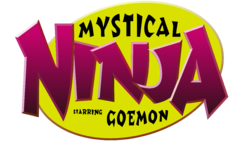
| |
| Developer(s) | Konami Hamster Corporation |
| Publisher(s) | Konami Hamster Corporation |
| Genre(s) | Action-adventure Platformer |
| Console/platform of origin | Arcade |
| First installment | Mr. Goemon (1986) |
| Latest installment | Arcade Archives Mr. Goemon (2015) |
Goemon (がんばれゴエモン, Go For It, Goemon!) is an action-adventure series made by Konami. Although Konami mostly regards the series as largely too culturally based to be released worldwide, several games have been released to the west: one for the Super NES (The Legend of the Mystical Ninja in 1991), two for the Nintendo 64 (Mystical Ninja Starring Goemon in 1997, and Goemon's Great Adventure in 1999), and two for the Game Boy (the first in 1991, as part of Konami GB Collection Vol. 3, and Mystical Ninja Starring Goemon in 1997, the former of which was released in Europe but not in America). The series is mainly action-adventure oriented, although the series has dipped its toes into other genres, such as role-playing games and puzzle games.
The main protagonist, the titular Goemon, appears in Super Smash Bros. Ultimate as a Mii Swordfighter Costume as part of Round 3.
Mana
| Mana (universe) | |
|---|---|

| |
| Developer(s) | Square Enix Square Brownie Brown |
| Publisher(s) | Square Enix Square Nintendo |
| Genre(s) | Action role-playing |
| Console/platform of origin | Game Boy |
| First installment | Final Fantasy Adventure (1991) |
| Latest installment | Trials of Mana (2020) |
Mana (聖剣伝説, Legend of the Holy Sword) is a series of action role-playing games made by Square Enix (formerly Squaresoft). The series was developed as a supplemental storyline to Final Fantasy, but elements of that series were dropped from the second game, Secret of Mana, onwards. The series often revolves around the Mana Tree, the Mana Sword, and forces trying to steal away it's powers. The series has a real-time battle system.
On April 21, 2020, it was announced that Spirits from the 2020 remake of Trials of Mana would be added to the Spirit Board in an event on April 24 as a tie-in to the remake's release on the same day. Spirits to be featured are Duran and Angela, Kevin and Charlotte, and Hawkeye and Riesz, with each pairing representing one of the three storylines of Trials.
Rabbids
| Rabbids (universe) | |
|---|---|
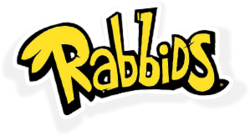
| |
| Developer(s) | Ubisoft |
| Publisher(s) | Ubisoft |
| Genre(s) | Party |
| Console/platform of origin | Game Boy Advance |
| First installment | Rayman Raving Rabbids (2006) |
| Latest installment | Rabbids Coding! (2019) |
Rabbids (ラビッツ・パーティー, Rabbits Party; Les Lapins Crétins (The Moronic Rabbits) in French) is a multimedia franchise that began as a spinoff of the Rayman series before branching off into its own separate universe. The series follows the various antics of the titular Rabbids, a race of crazed rabbit-like creatures that spout gibberish and cause mischief wherever they go. The Rabbids series and the Super Mario series crossed over in the turn-based strategy game Mario + Rabbids Kingdom Battle, in which a device called the "SupaMerge" hits the Rabbids' Time-Washing Machine and transports them to the Mushroom Kingdom, merging them with various objects found therein.
Rabbid Mario, Rabbid Peach, and Rabbid Kong from Kingdom Battle appear as spirits in Super Smash Bros. Ultimate, with the latter using his design from Kingdom Battle's "Donkey Kong Adventure" DLC. Additionally, on January 16th, 2020, it was confirmed that Rabbid headgear would be a Mii Costume as part of Round 5 of DLC.
Rayman
| Rayman (universe) | |
|---|---|

| |
| Developer(s) | Ubisoft |
| Publisher(s) | Ubisoft Gameloft Feral Interactive Nintendo |
| Genre(s) | Platformer |
| Console/platform of origin | Atari Jaguar |
| First installment | Rayman (1995) |
| Latest installment | Rayman Mini (2019) |
Rayman (レイマン, Rayman) is a platformer franchise focusing on the limbless hero Rayman as he protects his world against everything from robot pirates to psychotic bunnies.
The titular character, alongside his best friend Globox and the barbarian princess Barbara from Rayman Legends, appear as trophies in Super Smash Bros. for Wii U.
Rayman returns as a spirit in Super Smash Bros. Ultimate.
Resident Evil
| Resident Evil | |
|---|---|

| |
| Developer(s) | Capcom |
| Publisher(s) | Capcom |
| Genre(s) | Survival horror Third-person shooter First-person shooter |
| Console/platform of origin | PlayStation |
| First installment | Resident Evil (1996) |
| Latest installment | Resident Evil 3 (2020) |
Resident Evil (バイオハザード, Biohazard) is a series of survival horror shooters developed by Capcom. The main storyline of the series features various protagonists fighting against the Umbrella Corporation or people with connections to them, who has developed various deadly viruses creating zombies and nightmarish mutants.
In Super Smash Bros. Ultimate, four characters from the series, Chris Redfield, Leon Kennedy, Albert Wesker, and Jill Valentine, all appear as Spirits. They were first released on November 29th, 2019 via the Spirit Board event Oust Resident Evil!.
River City
| River City (universe) | |
|---|---|
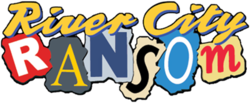
| |
| Developer(s) | Technōs Japan Atlus Arc System Works |
| Publisher(s) | Taito Technōs Japan Atlus Arc System Works |
| Genre(s) | Beat 'em up Sports |
| Console/platform of origin | Arcade |
| First installment | Renegade (1986) |
| Latest installment | Stay Cool, Kobayashi-san!: A River City Ransom Story (2019) |
River City (くにおくん, Kunio-kun) is a beat 'em up and sports game series made by Technōs Japan, which is now handled by Arc System Works. The series stars the titular Kunio (known as Alex in River City Ransom, the Western localization of Downtown Nekketsu Monogatari), beating his way through dangerous gangs or competing in sports, often joined by his friendly rival Riki (Ryan in River City Ransom).
Four Spirits from the River City franchise were added to the Spirit Board during the Spirit Board event River City Smash in Super Smash Bros. Ultimate. The event started on January 24th, 2020 and ended on January 28th of the same year. Notably, the characters appear with their original Japanese names and appearances across all versions rather than using their localized names.
Shantae
| Shantae (universe) | |
|---|---|
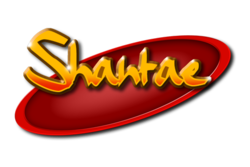
| |
| Developer(s) | WayForward Technologies |
| Publisher(s) | Capcom WayForward Technologies |
| Genre(s) | Platformer |
| Console/platform of origin | Game Boy Color |
| First installment | Shantae (2002) |
| Latest installment | Shantae and the Seven Sirens (2019) |
Shantae (シャンティ, Shantae) is a series of action platformers developed by WayForward Technologies that star the titular character, Shantae, a half-genie half-human girl who can use her long hair to attack enemies, unlock new abilities and weapons with progression, and transform into different animals by belly dancing.
Both the protagonist and recurring antagonist of the series, Shantae and Risky Boots respectively, appear as Spirits in Super Smash Bros. Ultimate using their artwork from the fourth installment, Shantae: Half-Genie Hero.
Tetris
| Tetris (universe) | |
|---|---|

| |
| Developer(s) | Alexey Pajitnov Various |
| Publisher(s) | Nintendo Various |
| Genre(s) | Puzzle |
| Console/platform of origin | Elektronika 60 |
| First installment | Tetris (1984) |
| Latest installment | Tetris 99 (2019) |
| Article on Hard Drop Tetris Wiki | Tetris (universe) |
Tetris (テトリス, Tetris) is a tile-matching puzzle video game series created by Alexey Pajitnov that released on various consoles over the years.
Both Tetris: Type A and Tetris: Type B from the Game Boy version appear in Super Smash Bros. Brawl as music for the Luigi's Mansion stage.
Tetris: Type A returns in Super Smash Bros. for Nintendo 3DS, but only as a track for Smash Run. In Super Smash Bros. for Wii U, both tracks reappear. While Tetris: Type A still plays in the Luigi's Mansion stage like in Super Smash Bros. Brawl, Tetris: Type B is moved to the Wuhu Island stage.
Tetris: Type A and Tetris: Type B both return in Super Smash Bros. Ultimate, now only playing on Summit, Duck Hunt, and stages from non-playable universes. Five spirits depicting different Tetrimino shapes were also added via the Attack of the Tetriminos! Spirit Board event. The singular spirits include the I, T, and O shapes, while shared spirits include the S & Z shapes and the L & J shapes.
The Tower
| The Tower (universe) | |
|---|---|
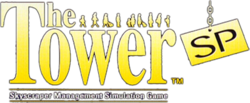
| |
| Developer(s) | OPeNBooK Vivarium |
| Publisher(s) | OPeNBooK Maxis Nintendo Sega |
| Genre(s) | Construction and Management simulation |
| Console/platform of origin | Macintosh System 7 |
| First installment | SimTower: The Vertical Empire (1994) |
| Latest installment | The Tower for iPhone (2011) |
The Tower (ザ・タワー, The Tower) is a series of construction and management simulator games in which the player builds and manages the operations of a modern, multi-use skyscraper. The North American release of the first game, The Tower, was localized by Maxis as a part of the Sim series, titled SimTower: The Vertical Empire.
Yama, the boss from the Game Boy Advance installment, The Tower SP, appears as a spirit in Super Smash Bros. Ultimate.
Undertale
| Undertale (universe) | |
|---|---|
| Developer(s) | Toby Fox 8-4 |
| Publisher(s) | Toby Fox 8-4 |
| Genre(s) | Role-playing |
| Console/platform of origin | Microsoft Windows Apple OS X |
| First installment | Undertale (2015) |
| Latest installment | Deltarune: Chapter 1 (2018) |
Undertale, officially stylized as UNDERTALE, is an indie role-playing game created by Toby Fox. In the game, the player traverses an underground world full of quirky monsters and can either befriend or murder them, with different choices resulting in different endings.
One of the major characters encountered, Sans, appears as a downloadable Mii Gunner costume in Super Smash Bros. Ultimate as part of Round 3. The costume also comes with a new arrangement of his boss theme MEGALOVANIA as a DLC music track, only playing on stages with music listed in the "Other" category.
Warframe
| Warframe (universe) | |
|---|---|

| |
| Developer(s) | Digital Extremes Panic Button |
| Publisher(s) | Digital Extremes |
| Genre(s) | Third-person shooter Action role-playing |
| Console/platform of origin | Microsoft Windows |
| First installment | Warframe (2013) |
| Latest installment | Warframe (2013) |
Warframe is a free-to-play cooperative third-person shooter/action role-playing game made by Digital Extremes. It follows a member of the Tenno, an ancient warrior race, who awakens from a centuries-long cyrosleep to find their planetary system at war with each other. The Tenno use bio-mechanical suits, the eponymous Warframes, along with various weapons to attack their enemies.
The player's guide, the Lotus, as well as Natah appear as a spirit in Super Smash Bros. Ultimate, released in the spirit event Spirits in Black.
SNK Series
Alpha Mission
| Alpha Mission (universe) | |
|---|---|
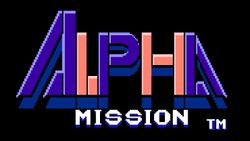
| |
| Developer(s) | SNK Hamster Corporation |
| Publisher(s) | SNK Hamster Corporation |
| Genre(s) | Shoot-'em-up |
| Console/platform of origin | Arcade |
| First installment | Alpha Mission (1985) |
| Latest installment | Arcade Archives Alpha Mission (2019) |
Alpha Mission (エー・エス・オー - アーマード・スクラム・オブジェクト, ASO: Armored Scrum Object) is a series of vertically-scrolling shoot-'em-up games created by SNK. Alpha Mission was released as an arcade game in 1985 and was later ported to the NES. A sequel, Alpha Mission II, was released in 1991 for the Neo Geo arcade and home systems. In the series, the player controls the fighter SYD against the deadly fleet of the Seven Star Alliance, attacking enemies in the air and on the ground.
A music track from the game, Theme of SYD, appears in Super Smash Bros. Ultimate.
Art of Fighting
| Art of Fighting (universe) | |
|---|---|
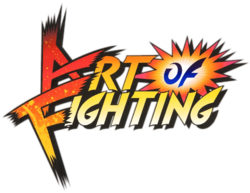
| |
| Developer(s) | SNK Hamster Corporation |
| Publisher(s) | SNK Hamster Corporation |
| Genre(s) | Fighting |
| Console/platform of origin | Arcade |
| First installment | Art of Fighting (1992) |
| Latest installment | Art of Fighting Anthology (2017) |
Art of Fighting (龍虎の拳, Fist of Dragon and Tiger) is series of 2D competitive fighting games created by SNK starting in 1992. This trilogy was the second fighting game series created by SNK after Fatal Fury: King of Fighters, and the first two games are prequels to the Fatal Fury series, being set between the late 1970s and early 1980s. It is based around the travels of its protagonist, Ryo Sakazaki, who is one of SNK's most prominent fighting game characters.
Ryo Sakazaki, Yuri Sakazaki, and King appear as background characters in the King of Fighters Stadium in Super Smash Bros. Ultimate, with Ryo also appearing as a Mii Brawler costume and spirit. Geese Howard's spirit battle also takes partly from his appearance as a secret boss in Art of Fighting 2. There are additionally two music tracks from the series: a remix of the series' main theme, titled ART of FIGHT - Art of Fighting, and the Fatal Fury Special rendition of the same song, titled Art of Fighting Ver.230000000.0 - FATAL FURY SPECIAL.
Athena
| Athena (universe) | |
|---|---|

| |
| Developer(s) | SNK Hamster Corporation |
| Publisher(s) | SNK Hamster Corporation |
| Genre(s) | Platformer |
| Console/platform of origin | Arcade |
| First installment | Athena (video game) (1986) |
| Latest installment | Arcade Archives Athena (2018) |
Athena (アテナ, Athena) is a series of action games developed by SNK and loosely inspired by Greek mythology. Its first game, Athena, released as an arcade game in 1986 and was later ported to the NES. The game is notorious for its high difficulty, but it became a hit due to the main character's bikini getup, which was unique to her at the time. In the series, Princess Athena runs away from her kingdom in search for adventure. Her descendant, Athena Asamiya, stars in later games, such as Psycho Soldier. Both Princess Athena and Athena Asamiya appear in The King of Fighters.
The music track for the first level of Athena, titled Forest World - Athena, appears in Super Smash Bros. Ultimate.
Ikari Warriors
| Ikari Warriors (universe) | |
|---|---|
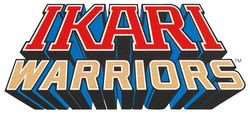
| |
| Developer(s) | SNK Hamster Corporation |
| Publisher(s) | SNK Hamster Corporation |
| Genre(s) | Run-and-gun |
| Console/platform of origin | Arcade |
| First installment | Ikari Warriors (1986) |
| Latest installment | Arcade Archives Ikari III -The Rescue- (2020) |
Ikari Warriors (怒, Fury) is a series of vertically-scrolling shooter games developed by SNK. The eponymous "Ikari Warriors", Ralf Jones and Clark Still (originally called Paul and Vince in the first game's Western release), are two mercenaries-for-hire who battle through enemies to reach the village of Ikari. The games were heavily influenced by the Rambo franchise. Both Ralf and Clark have continued to make appearances in The King of Fighters, and have appeared in Metal Slug as well since its sixth installment.
Both Ralf Jones and Clark Still appear as background characters in the King of Fighters Stadium in Super Smash Bros. Ultimate, as well as a shared spirit. The series is also represented with The King of Fighters XIV rendition of the theme "Ikari", titled IKARI - KOF XIV.
The King of Fighters
| The King of Fighters (universe) | |
|---|---|

| |
| Developer(s) | SNK Eolith Hamster Corporation |
| Publisher(s) | SNK Hamster Corporation |
| Genre(s) | Fighting |
| Console/platform of origin | Arcade |
| First installment | The King of Fighters '94 (1994) |
| Latest installment | The King of Fighters for Girls (2019) |
The King of Fighters (ザ・キング・オブ・ファイターズ, The King of Fighters) is a long-running fighting game series by SNK that combines characters from many of their different franchises, including Fatal Fury, Art of Fighting, Psycho Soldier, Samurai Shodown, and Ikari Warriors, as well as original characters. The series is known for its three-on-three team battles and extensive cast. The eponymous tournament is notable for playing host to sinister forces working behind the scenes, often working to awaken an entity known as Orochi, an avatar of Earth who is bent on annihilating humanity for its continuous destruction of the planet, or siphon its power for their own ends.
In Ultimate, The King of Fighters is treated as Terry's secondary universe; it forms the basis for his stage, King of Fighters Stadium, and five of the original characters from the series make cameos within the stage, those being Kyo Kusanagi, Iori Yagami, Goro Daimon, Chang Koehan, and Choi Bounge. Kyo and Iori also appear as spirits. Iori also appears as a Mii costume for the Mii Brawler. Several characters from other SNK franchises also appear on King of Fighters Stadium, using their designs from The King of Fighters series. Eighteen music tracks from many The King of Fighters installments are also available, in addition to four renditions of music tracks from the Fatal Fury and Ikari Warriors series.
Games with elements from or in the Super Smash Bros. series
The King of Fighters '94
- Playable Characters:
 Terry's main appearance, which features darker colors than his previous appearances in Fatal Fury, is based on his appearance here and, by proxy, the rest of the series throughout the 90's.
Terry's main appearance, which features darker colors than his previous appearances in Fatal Fury, is based on his appearance here and, by proxy, the rest of the series throughout the 90's.
- Stage Elements:
 Four characters that debuted in this game may appear in the background of the King of Fighters Stadium: Kyo Kusanagi, Goro Daimon, Chang Koehan, and Choi Bounge. In addition, all four have their appearances that debuted in this game.
Four characters that debuted in this game may appear in the background of the King of Fighters Stadium: Kyo Kusanagi, Goro Daimon, Chang Koehan, and Choi Bounge. In addition, all four have their appearances that debuted in this game. Ralf and Clark, two other characters that may back in the background of the King of Fighters Stadium, use their appearances from this game.
Ralf and Clark, two other characters that may back in the background of the King of Fighters Stadium, use their appearances from this game.
- Music:
 "Ne! - KOF '94": This game's theme for the Women Fighters team. Sourced from this game.
"Ne! - KOF '94": This game's theme for the Women Fighters team. Sourced from this game.
- Spirits:
The King of Fighters '95
- Stage Elements:
- Spirits:
The King of Fighters '96
- Stage Elements:
- Music:
 "Stormy Saxophone 2 - KOF '96": A remix of the theme for the Yagami team from this game.
"Stormy Saxophone 2 - KOF '96": A remix of the theme for the Yagami team from this game.
The King of Fighters '97
- Stage Elements:
- Spirits:
The King of Fighters '98
The King of Fighters '99
- Music:
 "176th Street - KOF '99": This game's theme for the Fatal Fury team. Sourced from this game.
"176th Street - KOF '99": This game's theme for the Fatal Fury team. Sourced from this game.
The King of Fighters 2000
- Playable Characters:
 Terry's yellow alternate costume derives from his C+D palette from this game.
Terry's yellow alternate costume derives from his C+D palette from this game.
- Music:
 "Terry115 - KOF 2000": This game's theme for the Fatal Fury team. Sourced from this game.
"Terry115 - KOF 2000": This game's theme for the Fatal Fury team. Sourced from this game.
The King of Fighters 2002
- Playable Characters:
 Terry's brown and green alternate costumes are derived from his heavy punch and heavy kick alternate palettes respectively from this game.
Terry's brown and green alternate costumes are derived from his heavy punch and heavy kick alternate palettes respectively from this game.
The King of Fighters XI
- Music:
 "Street Dancer - KOF XI": This game's theme for the Fatal Fury team. Sourced from this game.
"Street Dancer - KOF XI": This game's theme for the Fatal Fury team. Sourced from this game.
The King of Fighters XII
- Stages:
The King of Fighters 2002: Unlimited Match.
- Music:
 "DESERT REQUIEM ~Operation02UM~ - KOF 2002 UM": This game's theme for the Ikari Warriors team. Sourced from this game.
"DESERT REQUIEM ~Operation02UM~ - KOF 2002 UM": This game's theme for the Ikari Warriors team. Sourced from this game. "ESAKA!! - KOF 2002 UM": This game's theme for the Japan team. Sourced from this game.
"ESAKA!! - KOF 2002 UM": This game's theme for the Japan team. Sourced from this game. "KD-0079+ - KOF 2002 UM": This game's theme for the K' team. Sourced from this game.
"KD-0079+ - KOF 2002 UM": This game's theme for the K' team. Sourced from this game. "Undercover - KOF 2002 UM": This game's theme for the Agent team. Sourced from this game.
"Undercover - KOF 2002 UM": This game's theme for the Agent team. Sourced from this game. "Cutting Edge - KOF 2002 UM": The track played when fighting Krizalid. Sourced from this game.
"Cutting Edge - KOF 2002 UM": The track played when fighting Krizalid. Sourced from this game.
The King of Fighters XIII
- Music:
 "The Second Joker - KOF XIII": The track played when fighting Ash Crimson. Sourced from this game.
"The Second Joker - KOF XIII": The track played when fighting Ash Crimson. Sourced from this game. "Esaka Continues... - KOF XIII": This game's theme for the Japan team. Sourced from this game.
"Esaka Continues... - KOF XIII": This game's theme for the Japan team. Sourced from this game. "Wild Street - KOF XIII": This game's theme for the Fatal Fury team. Sourced from this game.
"Wild Street - KOF XIII": This game's theme for the Fatal Fury team. Sourced from this game. "Tame a Bad Boy - KOF XIII": This game's theme for the Kim team. Sourced from this game.
"Tame a Bad Boy - KOF XIII": This game's theme for the Kim team. Sourced from this game. "KDD-0063 - KOF XIII": This game's theme for the K' team. Sourced from this game.
"KDD-0063 - KOF XIII": This game's theme for the K' team. Sourced from this game.
The King of Fighters XIV
- Playable Characters:
 Terry's voice actor from this game, Takashi Kondō, reprises his role as Terry.
Terry's voice actor from this game, Takashi Kondō, reprises his role as Terry. The "Hungry Wolf" logo on the hat Terry wears for his yellow alternate costume comes from this game.
The "Hungry Wolf" logo on the hat Terry wears for his yellow alternate costume comes from this game. Terry's Triple Wolf incorporates Terry's unique voice lines for an EX Buster Wolf from this game.
Terry's Triple Wolf incorporates Terry's unique voice lines for an EX Buster Wolf from this game.
- Stages:
- Stage Elements:
- Music:
 "Kuri Kinton Flavor - KOF XIV": The track that plays on the Transcontinental Railroad stage. Sourced from this game.
"Kuri Kinton Flavor - KOF XIV": The track that plays on the Transcontinental Railroad stage. Sourced from this game. "Soy Sauce for Geese - KOF XIV": The track that plays whenever Terry Bogard and Geese Howard fight against one another. Sourced from this game.
"Soy Sauce for Geese - KOF XIV": The track that plays whenever Terry Bogard and Geese Howard fight against one another. Sourced from this game. "W.W.III - KOF XIV": Whip's theme in this game. Sourced from this game.
"W.W.III - KOF XIV": Whip's theme in this game. Sourced from this game. "New Order - KOF XIV": The track that plays whenever Kyo Kusanagi and Iori Yagami fight against one another. Sourced from this game.
"New Order - KOF XIV": The track that plays whenever Kyo Kusanagi and Iori Yagami fight against one another. Sourced from this game. "Yappari ESAKA - KOF XIV": This game's theme for the Japan team. Sourced from this game.
"Yappari ESAKA - KOF XIV": This game's theme for the Japan team. Sourced from this game. "Departure from South Town - KOF XIV": This game's theme for the Fatal Fury team. Sourced from this game.
"Departure from South Town - KOF XIV": This game's theme for the Fatal Fury team. Sourced from this game. "IKARI - KOF XIV": The track that plays whenever Ralf Jones and Clark Still fight against one another. Sourced from this game.
"IKARI - KOF XIV": The track that plays whenever Ralf Jones and Clark Still fight against one another. Sourced from this game.
Metal Slug
| Metal Slug (universe) | |
|---|---|
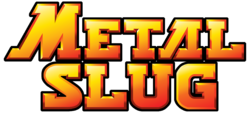
| |
| Developer(s) | Nazca Corporation SNK Hamster Corporation |
| Publisher(s) | Nazca Corporation SNK Hamster Corporation |
| Genre(s) | Run-and-gun |
| Console/platform of origin | Arcade |
| First installment | Metal Slug (1996) |
| Latest installment | Metal Slug Infinity (2019) |
Metal Slug (メタルスラッグ, Metal Slug) is a series of run-and-gun shooters. Known for their fluid animation and two-player co-op gameplay, the series involves a small team of soldiers called the Peregrine Falcons traveling the world to defeat mysterious enemy factions (most notably the military madman General Morden and the Rebel Army and the alien invaders known as Mars People, though in Metal Slug 5 the main enemies are the mysterious Ptolemaic Army and in Metal Slug 6 the Rebel army and the Mars People made a alliance with the Peregrine Falcons to stand over the outbreak of a new alien invasion knows as The Invaders), wielding semi-automatic handguns and a small tank known as SV-001 (the eponymous "Metal Slug"). As each stage progresses, they acquire more powerful weapons and tanks until confronting the final enemy. The characters of Metal Slug make common appearances in The King of Fighters, and starting with Metal Slug 6, the series also crosses over with Ikari Warriors.
Metal Slug is represented in Smash Ultimate through five music tracks playable on the King of Fighters Stadium stage: Main Theme of Metal Slug - METAL SLUG, Assault Theme - METAL SLUG 1-3, Final Attack - METAL SLUG 1-6, Judgment - METAL SLUG 2, and Blue Water Fangs (The Island of Dr. Moreau) - METAL SLUG 3.
Psycho Soldier
| Psycho Soldier (universe) | |
|---|---|
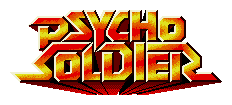
| |
| Developer(s) | SNK Hamster Corporation |
| Publisher(s) | SNK Hamster Corporation |
| Genre(s) | Action platformer |
| Console/platform of origin | Arcade |
| First installment | Psycho Soldier (1987) |
| Latest installment | Arcade Archives Psycho Soldier (2019) |
Psycho Soldier (サイコ・ソルジャー, Psycho Soldier) is an action platformer game developed by SNK and was released in arcades in 1987. It is the successor game to Athena, starring Athena Asamiya, a Japanese schoolgirl descendant of the similarly-named goddess who uses her psychokinetic powers to fight an alien invasion alongside the Chinese youngster Sie Kensou. It is notable for being the first video game to feature a theme song with sampled lyrics.
Athena Asamiya appears as a background character in King of Fighters Stadium using her design from King of Fighters '95, as well as a spirit, using her original game artwork. The Psycho Soldier Theme is also covered in both Japanese and English, with the latter being the first English version since its original release.
Samurai Shodown
| Samurai Shodown (universe) | |
|---|---|

| |
| Developer(s) | SNK Hamster Corporation |
| Publisher(s) | SNK Hamster Corporation |
| Genre(s) | Fighting |
| Console/platform of origin | Arcade |
| First installment | Samurai Shodown (1993) |
| Latest installment | Samurai Shodown (2019) |
Samurai Shodown (サムライスピリッツ, Samurai Spirits) is a weapon-based fighting game series made by SNK. The games are set in Japan in the late 18th century, involving the main protagonist Haohmaru and various other characters doing battle against dark forces threatening to spread their evil into the mortal world, such as the malevolent deity Ambrosia, who manipulates extremists like the sorcerer Shiro Amakusa to do its bidding. The earlier titles in the series are also well-known for their poor English translations at times. Despite the name of the series, most of the characters are not samurai in the traditional sense.
In Super Smash Bros. Ultimate, Nakoruru appears as a Mii costume for the Mii Swordfighter, and she appears as a spirit along with Haohmaru. The series is also represented with three music tracks from the first installment: Tuna, Banquet of Nature, and Gaia.
Dependent universes
Dependent universes are universes that are technically represented in some form in the Super Smash Bros. franchise, but are not considered their own series.
- Final Fight is a series of beat-em-up games made by Capcom. Cody, the series' protagonist, appears as a playable character in several Street Fighter games and receives a Spirit in Ultimate.
- Flicky is an arcade platformer made by Sega. Flicky, the game's eponymous character, is the basis of the Flicky animal friends from Sonic the Hedgehog, which appear on Windy Hill Zone.
- Marvel vs. Capcom is a fighting game featuring characters owned by Capcom and Marvel Comics. Mega Man's up tilt is based on the Mega Upper from this series[2], and Ken's Shinryuken is based on its incarnation from this series,[3] although they do not originate from the series. The series is also indirectly referenced by Palutena's Guidance in the conversation about Ryu.
- Meteos is a series of puzzle games originally released for the Nintendo DS. The X Bomb's behavior in the Super Smash Bros. series is similar to that of the item of the same name in Meteos, in which it explodes in a cross shape rather than exhibit its behavior from Kid Icarus: Uprising.
- Policenauts is a sci-fi adventure game made by Hideo Kojima for Konami. One character, Meryl Silverburgh, would serve as the basis of a character by the same name in the Metal Gear series, who appears as a sticker in Brawl and a Spirit in Ultimate.
- Pro Yakyuu: Family Stadium (or Famista for short) is a series of baseball games made by Namco. Two spin-offs of the franchise, Mario Superstar Baseball and Mario Super Sluggers, are represented in Mario series. Content from these two games was been featured as Stickers in Brawl and as Spirits in Ultimate.
- Pulseman is a platformer game made by Game Freak for Sega. Pikachu's Volt Tackle is inspired by the Volteccer, Pulseman's signature attack, and even has the same name in Japanese.[4]
- Shin Megami Tensei is a post-apocalyptic RPG made by Atlus. Persona is a sub-series of Shin Megami Tensei. The Tsubasa Oribe and Tsubasa Oribe (Carnage Form) Spirits in Ultimate originate from Tokyo Mirage Sessions ♯FE, a pop idol-themed crossover between Shin Megami Tensei and Fire Emblem.
- Yume Kōjō '87 was a promotional event held by Fuji TV in 1987 in Japan. Yume Kōjō: Doki Doki Panic is a game featuring the mascots of this event, which was localised as Super Mario Bros. 2 and eventually re-localised back to Japanese as Super Mario USA. Mushroom Kingdom 2 is based on the Super Mario All-Stars version of the game, and characters from the game such as Birdo, Pidgit and Shy Guy have appeared in various forms as parts of the Mario and, in some cases for Shy Guy, Yoshi universes.
Trivia
- Prior to their fighter or stage debut in the series, Kid Icarus, Pikmin, Animal Crossing, Duck Hunt, Splatoon, Wrecking Crew, Pilotwings, and Wii Sports all have had only minor representation in the series at one point.
- Similarly, Clu Clu Land, Devil World, Excite, SimCity, Custom Robo, Kururin, Sheriff, The Mysterious Murasame Castle, Kaeru no Tame ni Kane wa Naru, Brain Age, Joy Mech Fight, Fatal Frame, Art Academy, Virtua Fighter, and Monster Hunter all have only received minor representation in the series as well before eventually being represented with Items or Assist Trophies.
- Balloon Fight, Excite, Jam with the Band, Golden Sun, Custom Robo, Kururin, Nintendo Wars, Sin and Punishment, Drill Dozer, and Rhythm Heaven are the only major universes to have become a minor universe in an installment after receiving major representation in a previous installment.
- However, Golden Sun would later return to its previous status in a following installment, and Balloon Fight would become a primary universe in a following installment, as well.
- Doshin the Giant, bit Generations, English Training, Soccer, Thru, BIT.TRIP, Shadow Land, Bravoman, and Tales are the only minor universes from previous installments to have no representation in Super Smash Bros. Ultimate.
- With it first being represented in Melee and not receiving any representation again until Ultimate, Cubivore has the longest gap for lack of representation between installments of any universe.
References


